An eco-friendly cottagecore kitchen blends nostalgic charm with modern sustainability. It’s warm, rustic, slow-living inspired, and deeply connected to nature yet practical enough for everyday cooking. From natural materials to energy-saving choices, in this guide it helps you to build a space that feels wholesome, charming, and environmentally conscious.
When you’re planning a full renovation or adding small upgrades, this structure makes it easy to visualize, compare, and apply each idea beautifully.
You’ll find:
- How to plan an eco-friendly cottagecore kitchen
- Best natural and sustainable materials
- A quick checklist before designing
- 24 cottagecore kitchen ideas grouped by theme
- Styling + care tips

How to Plan an Eco-Friendly Cottagecore Kitchen That Truly Works
Start by defining your priorities: Are you focusing on sustainability, coziness, storage, handmade elements, or natural materials? Cottagecore leans toward simplicity, so think about how to make the space feel lived-in, soft, and unprocessed.
Eco-friendly cottagecore kitchens rely on:
- natural textures
- vintage or repurposed pieces
- earth-toned palettes
- energy-efficient appliances
- handmade details
- less waste + durable materials
The key is balancing nostalgia with practicality creating a space that feels peaceful yet functions effortlessly for cooking, storing, and daily rhythm.
Key Eco-Friendly + Cottagecore Design Tips
| What to Do | Why It Helps |
| Use natural materials | Lower environmental impact + timeless charm |
| Choose energy-efficient appliances | Saves power, reduces long-term costs |
| Add open shelves | Enhances the cottage look + uses fewer materials |
| Incorporate vintage or secondhand items | Reduces waste + adds authenticity |
| Use non-toxic paints + finishes | Safer for air quality + better for the environment |
| Add greenery + herbs | Improves air quality + gives fresh, cottage vibes |
| Prioritize natural light | Reduces electricity and enhances warmth |
Checklist Before You Start Designing
- What colors match your calming, nature-inspired theme?
- Do you prefer painted cabinets or natural wood?
- Are you using reclaimed, recycled, or vintage materials?
- How will you incorporate energy efficiency?
- Do you prefer cozy open shelves or closed cabinets?
- Where will your herbs, plants, and greenery go?
- What sustainable choices fit your budget?
24 Eco-Friendly Cottagecore Kitchen Ideas
Here are Grouped so can compare quickly.
1. Choose Natural Wood Cabinets

Natural wood it’s just feet right in a cottagecore kitchen. Pine or oak gives that soft, homey look, while reclaimed wood adds character without trying too hard. The little knots, the uneven grain they make the space feel lived-in, not styled.
A simple wax or oil finish keeps things eco-friendly and lets the wood breathe. It’s an easy way to bring a comfort natural base into the room without over thinking it.
Natural Wood Cabinets
Natural wood just feels right in a cottagecore kitchen…
Suggested Supply: Check price on Amazon.com
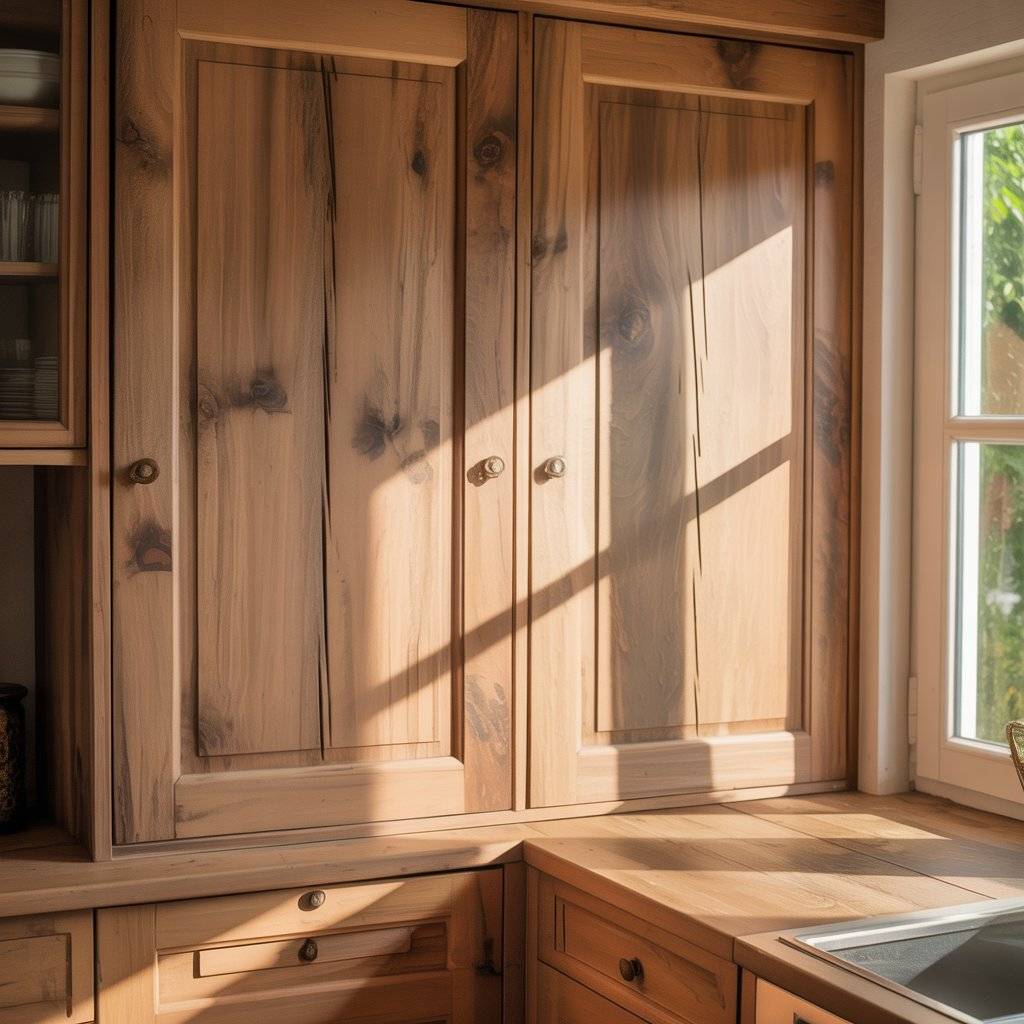
2. Add Open Rustic Shelving
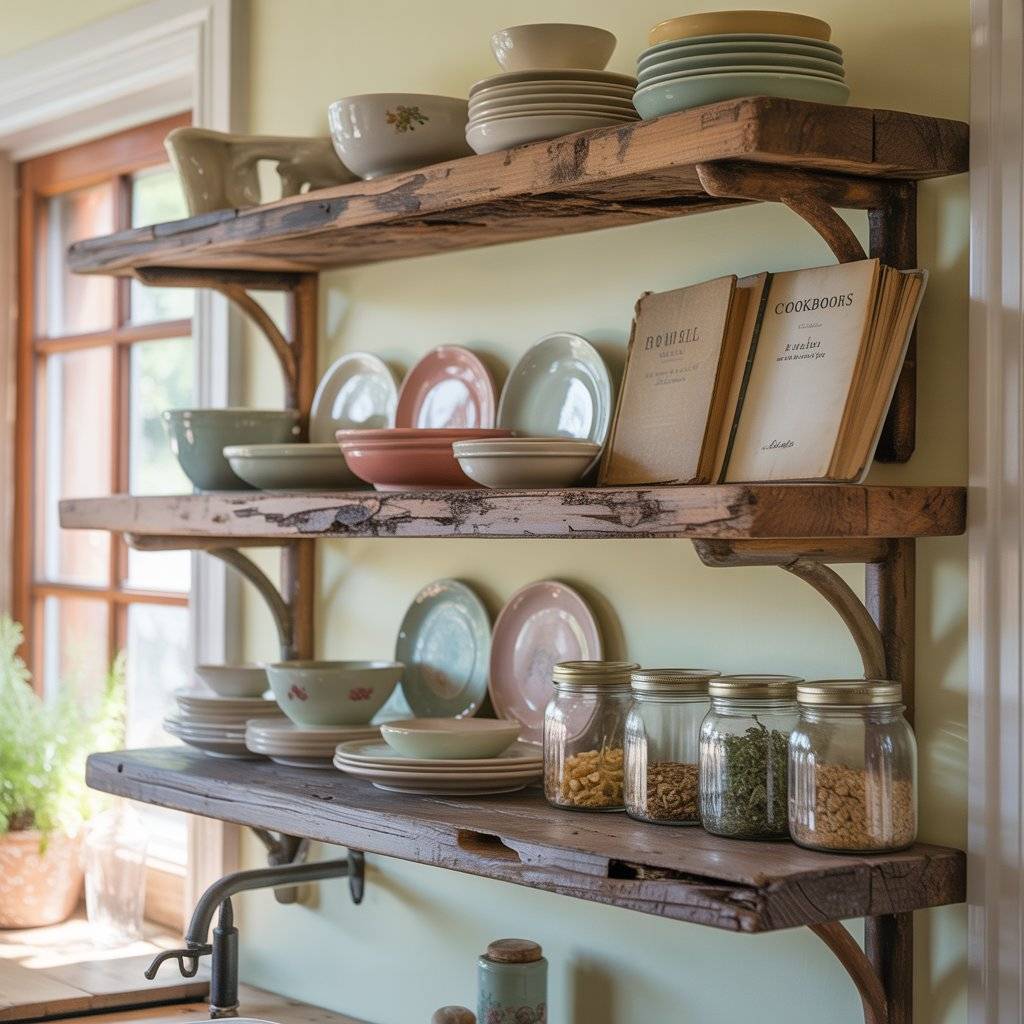
Reclaimed wood shelves fit perfectly in a cottagecore kitchen because they feet in the kitchen, and a bit imperfect in the best way. They’re great for showing off your everyday dishes, glass jars, and a few well-loved cookbooks.
The open style keeps the room feeling light and airy instead of crowded with big upper cabinets. Plus, using reclaimed wood means you’re reusing what already exists it’s sustainable without making a big deal out of it. In Just a small swap that brings charm and softness into the space.
Open Rustic Shelving – Suggested Supply: Check price on Amazon.com
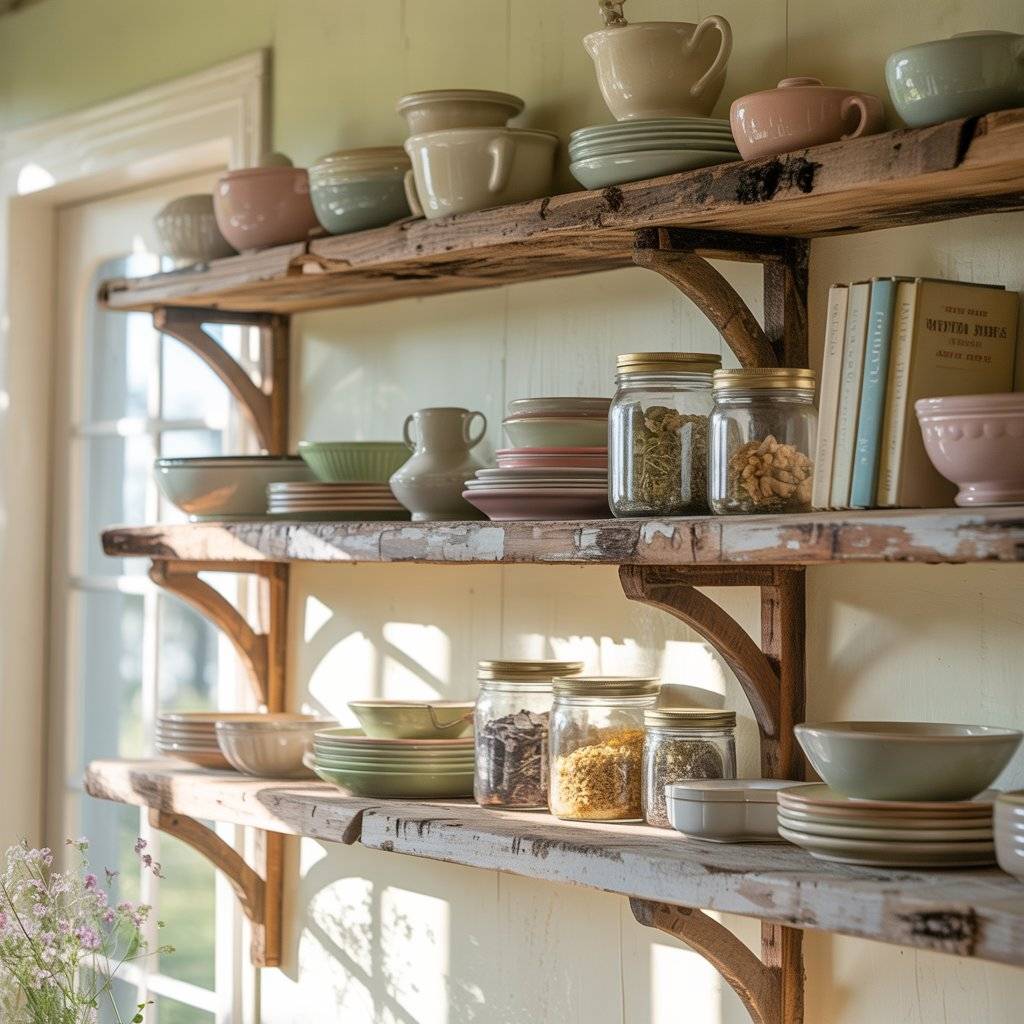
3. Incorporate Earth-Toned Color Palettes

Soft, grounded colors work really well in a cottagecore kitchen. Shades like sage green, warm cream, muted browns, and those clay-style tones instantly make the room feel calmer. Nothing bold or loud just colors that feel like they came straight from the garden or the countryside.
These tones blend easily with natural wood and handmade pieces, so the whole space feels warm and lived-in. It’s a quiet way to bring nature indoors without forcing it.

4. Use Vintage Furniture as Storage
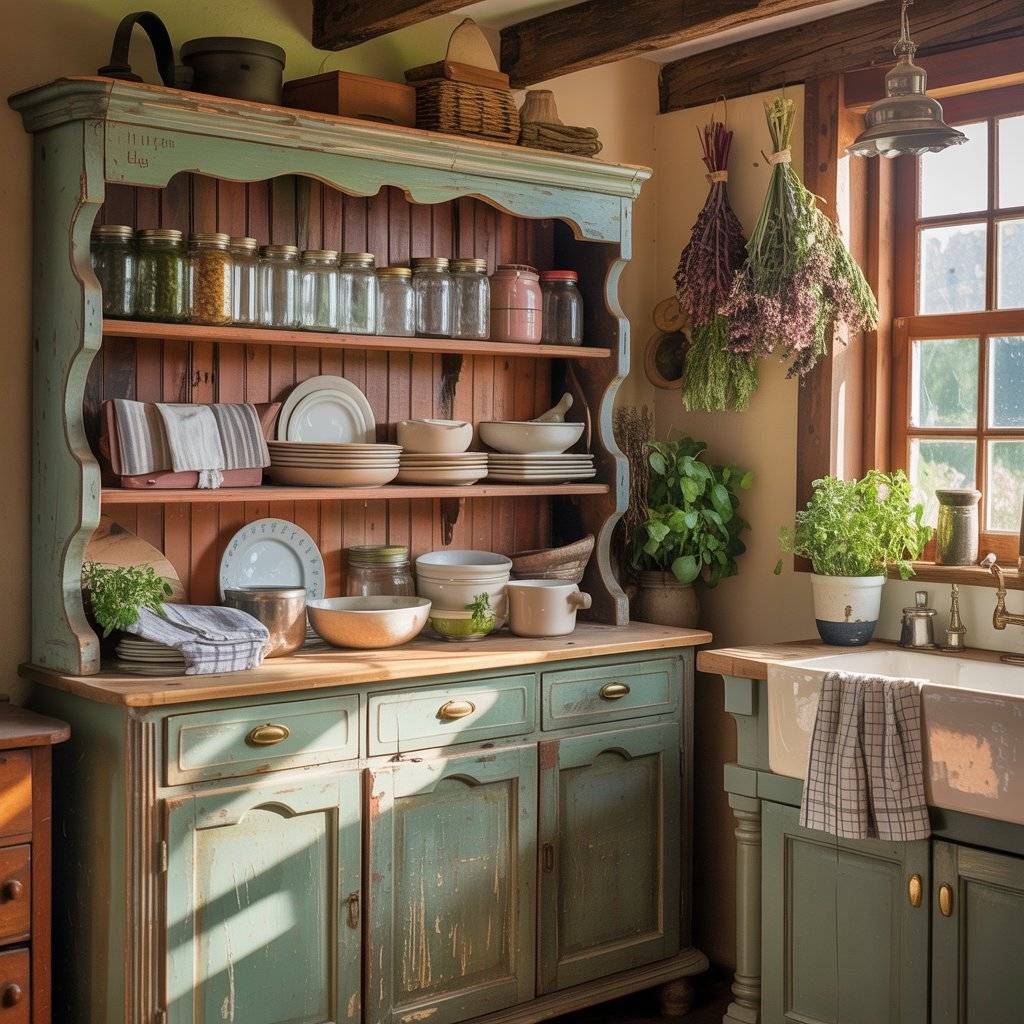
Old furniture pieces just fit the cottagecore vibe without forcing it. A thrifted hutch, a weathered sideboard, or even a repurposed dresser can hold dishes, jars, or linens while giving the room some personality.
The little scratches and worn handles tell their own story, and you’re keeping something out of the landfill at the same time. It’s storage that feels collected, not bought, and it instantly makes the kitchen feel warmer and more lived-in.
Vintage Furniture as Storage – Suggested Supply: Check price on Amazon.com
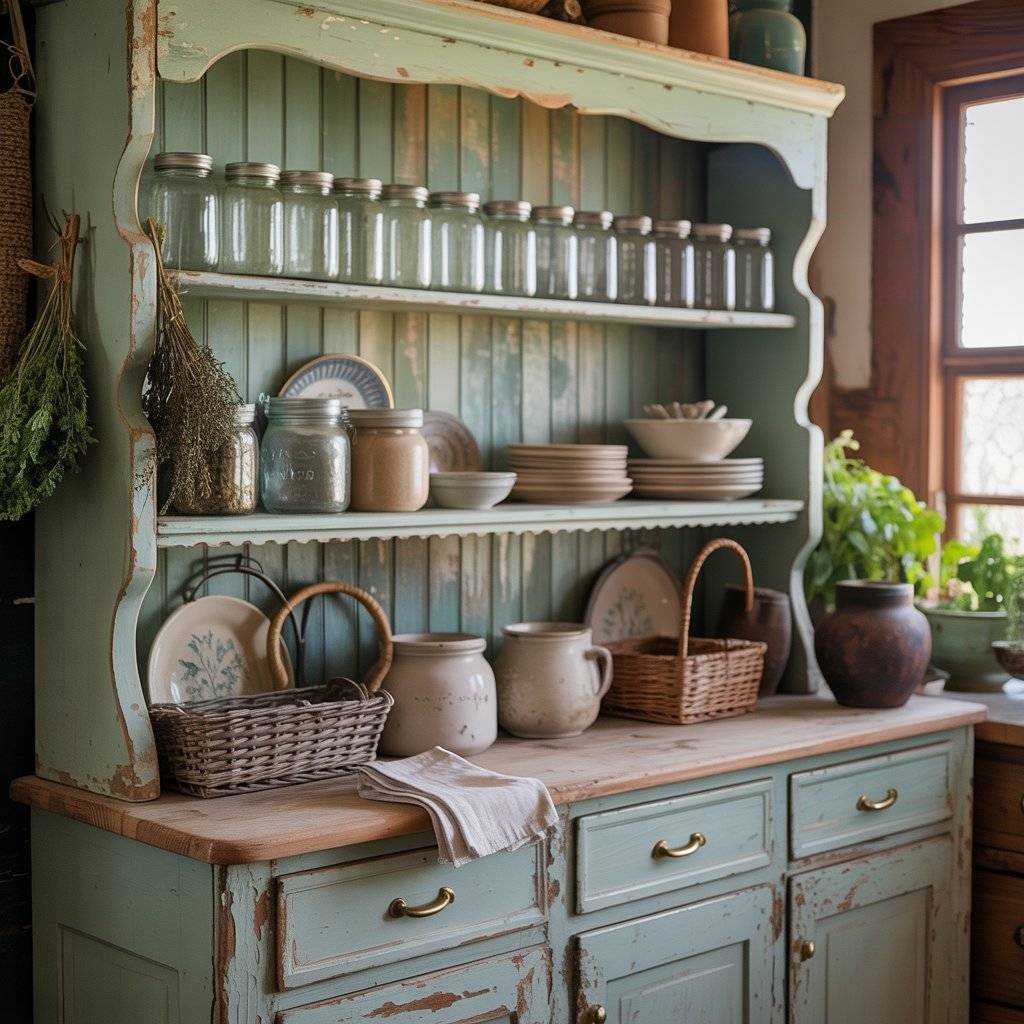
5. Install Energy-Efficient Appliances

Pick appliances that save energy without feeling too modern or out of place. Retro-style fridges, neutral-toned ovens, or compact dishwashers can look charming while still carrying eco certifications.
They help cut your energy bills and make the kitchen feel thoughtful and intentional. A little planning here goes a long wayyour kitchen stays cozy, functional, and better for the planet at the same time.
Energy-Efficient Appliances – Suggested Supply: Check price on Amazon.com
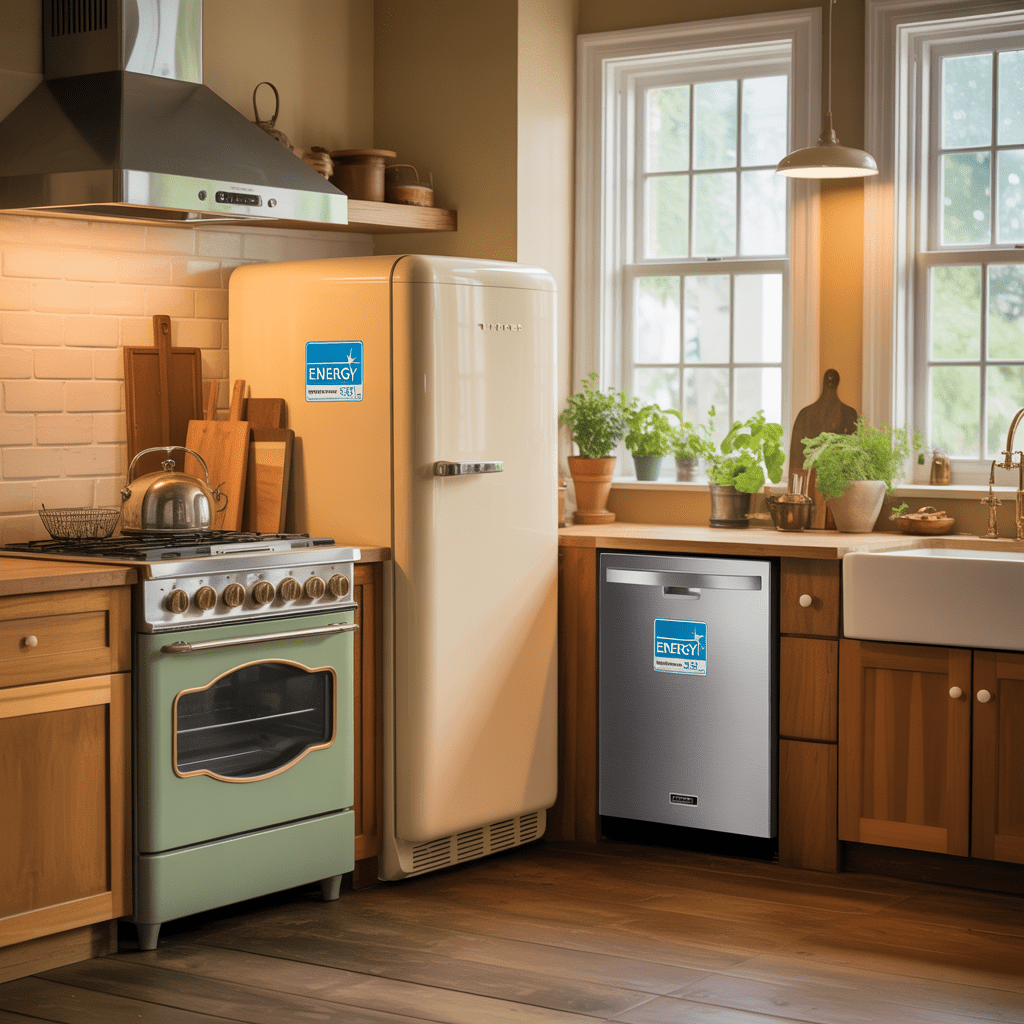
6. Display Ingredients in Glass Jars

Ditch the plastic and embrace glass jars they just feel sweeter on open shelves. Fill them with grains, pasta, or spices, and suddenly your kitchen looks organized but still cozy.
You can even label them with handwritten tags or chalk markers for that extra handmade touch. Glass keeps ingredients fresh and cuts down on waste, making it a small change that really matters. Plus, it adds a little sparkle when sunlight hits the shelves.
Ingredients in Glass Jars– Suggested Supply: Check price on Amazon.com
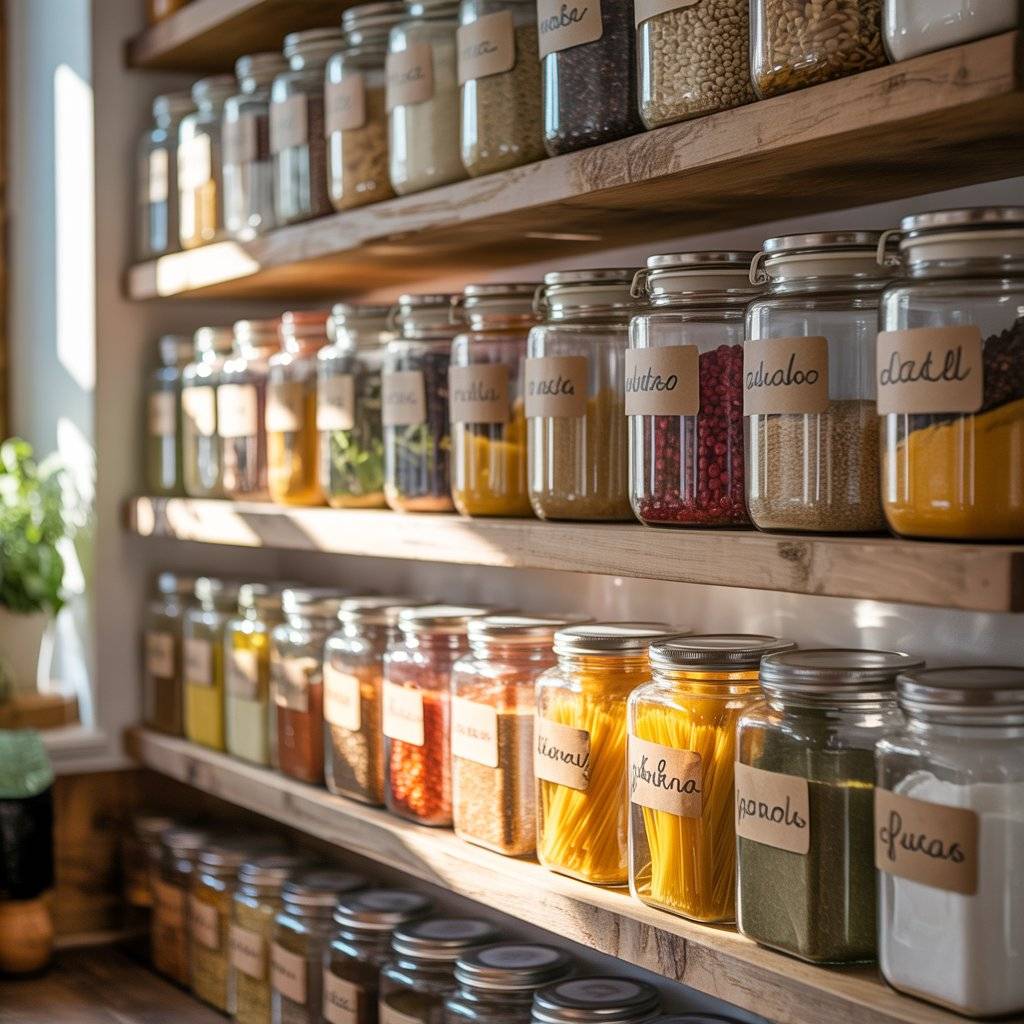
7. Add Hanging Rails for Utensils
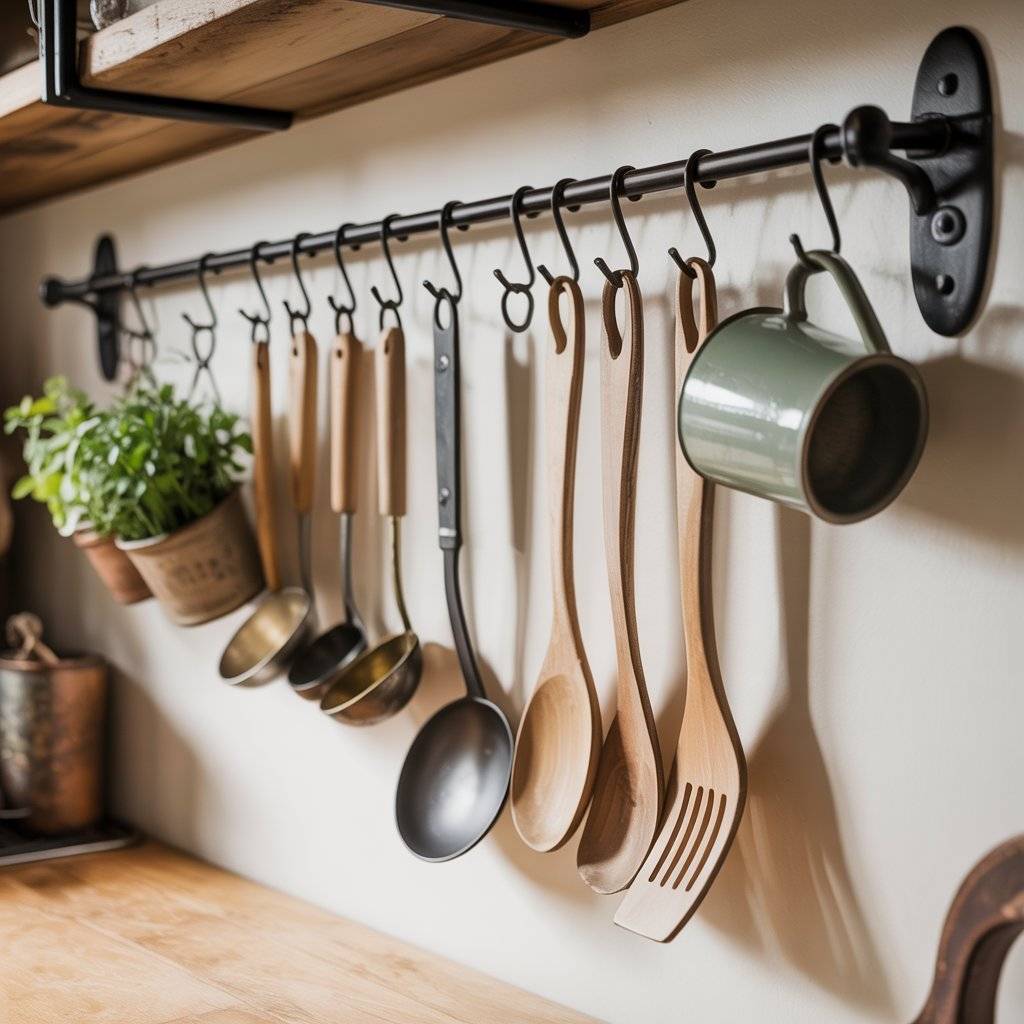
A simple rail along the wall can make a big difference. Black metal, aged iron, or warm brass lets you hang your wooden spoons, ladles, and spatulas right where you need them.
It keeps counters clear but still feels cozy and lived-in, like a farmhouse kitchen you actually use. You can even clip small herb pots or mugs to the rail for extra charm. It’s practical, simple, and adds a bit of rustic personality without fuss.
Hanging Rails for Utensils – Suggested Supply: Check price on Amazon.com
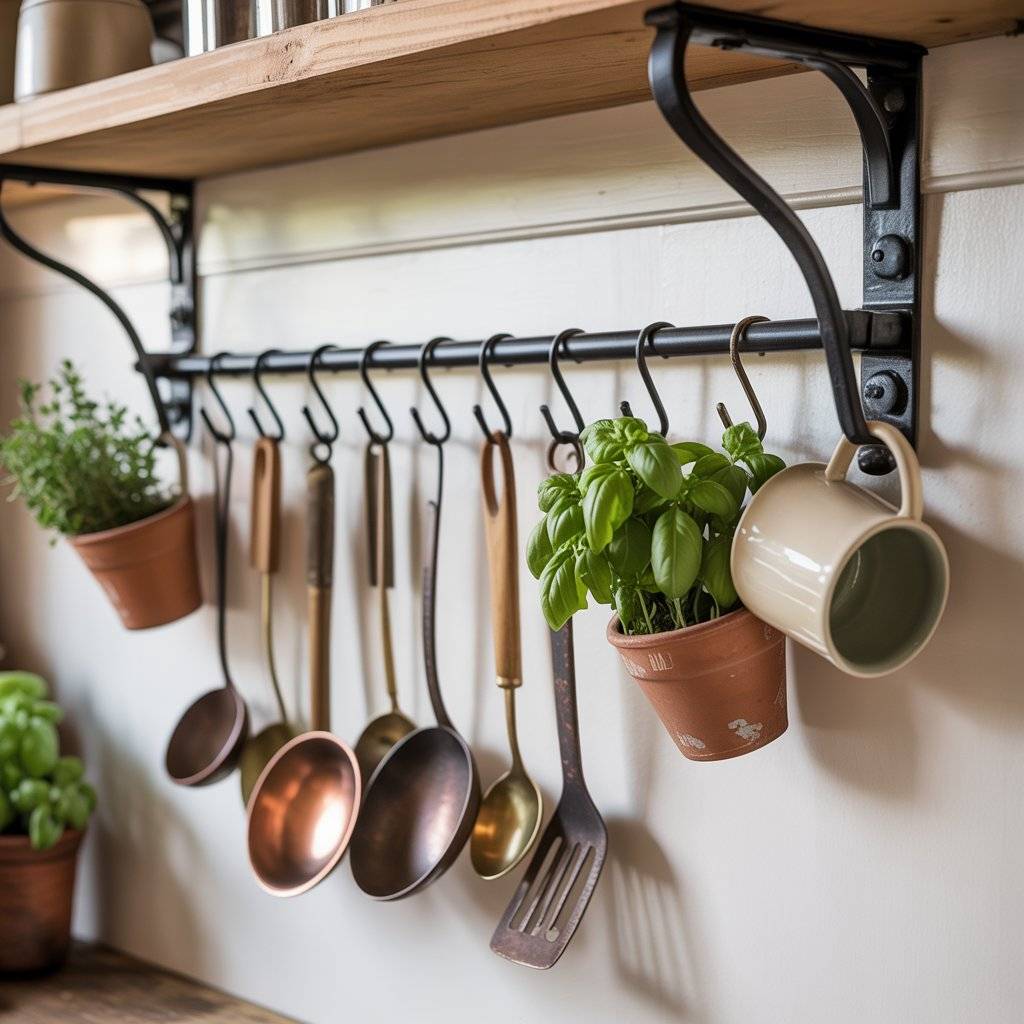
8. Use Linen Textiles Instead of Synthetic Fabrics
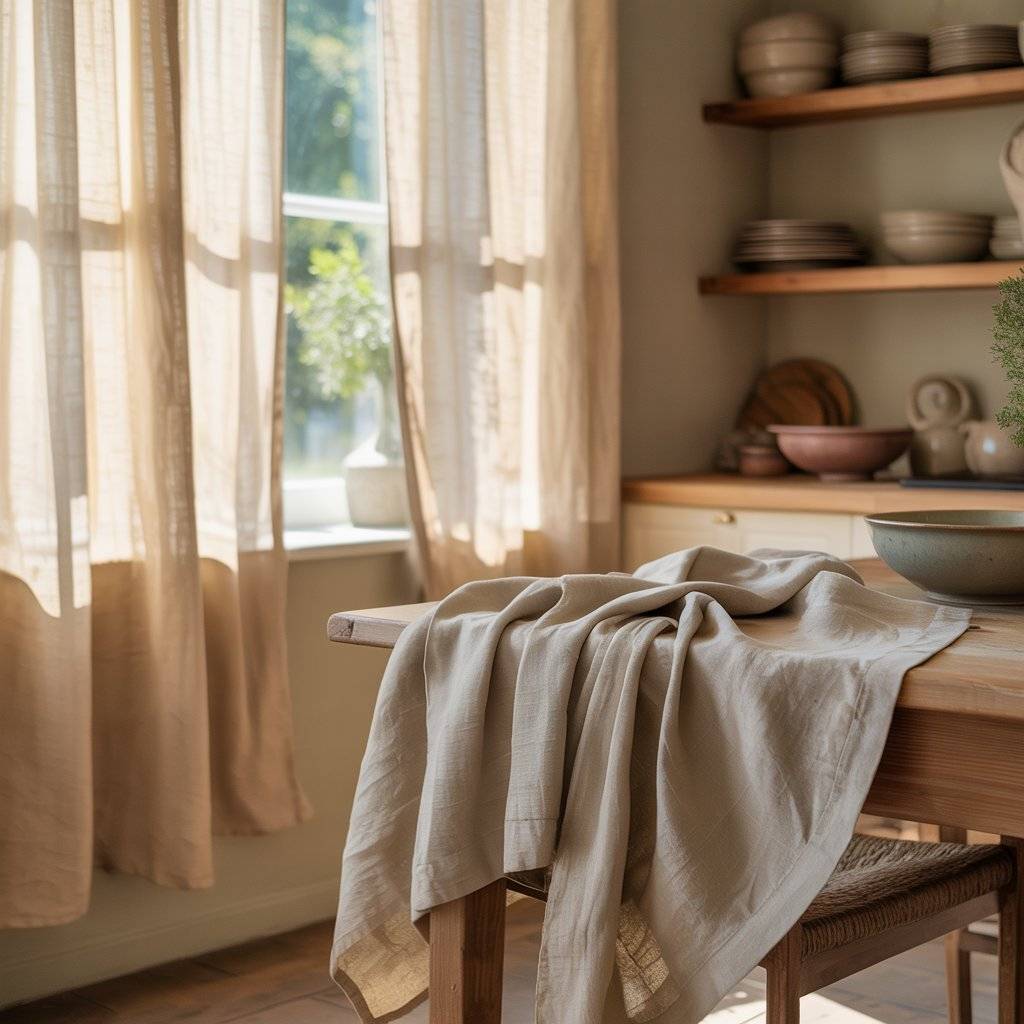
Swap out stiff, plastic-feeling fabrics for linen whenever you can. Linen curtains, tablecloths, and kitchen towels add a soft, lived-in touch that feels cozy and natural.
It’s breathable, long-lasting, and gets even softer with each wash unlike synthetic fabrics that fade or pill. Plus, choosing linen is a small, simple way to be eco-friendly while keeping your kitchen feeling warm and timeless. A few carefully chosen pieces can completely change the vibe.
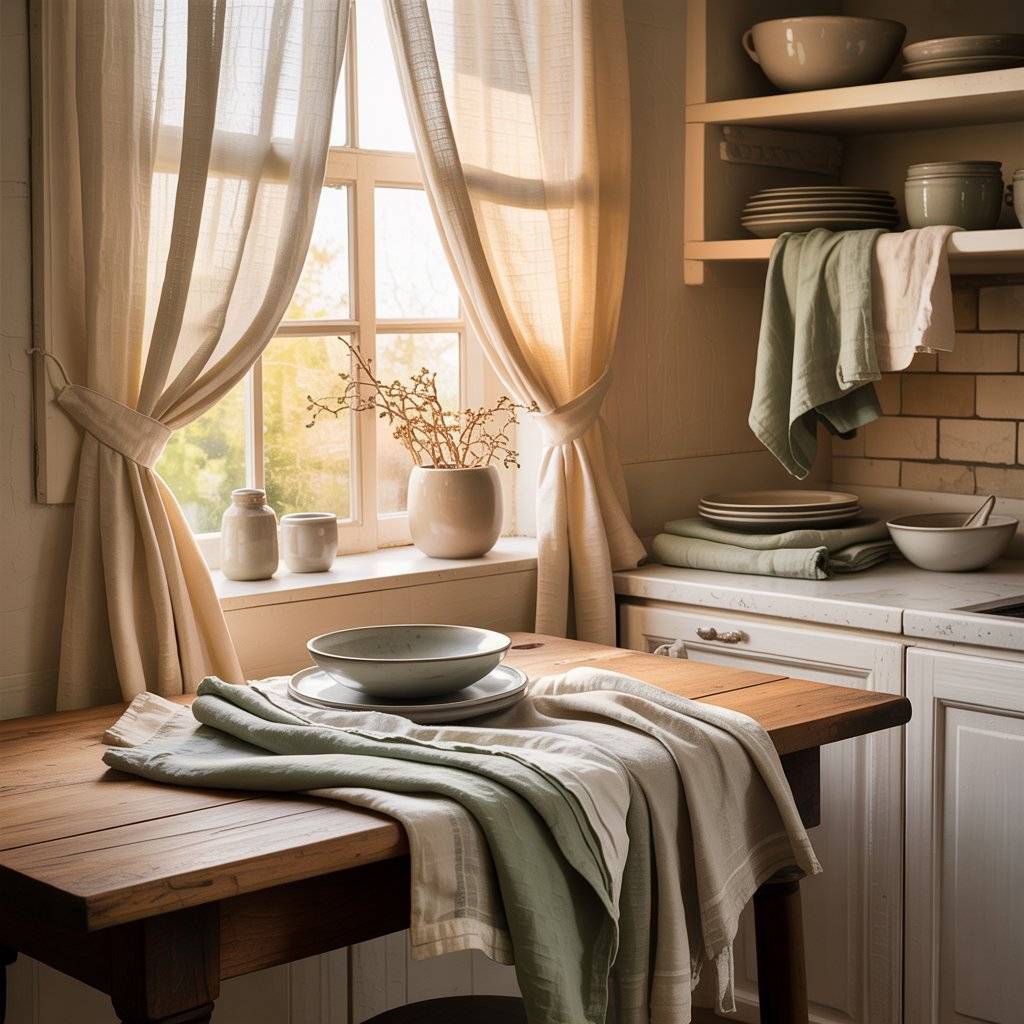
9. Make Space for an Indoor Herb Garden
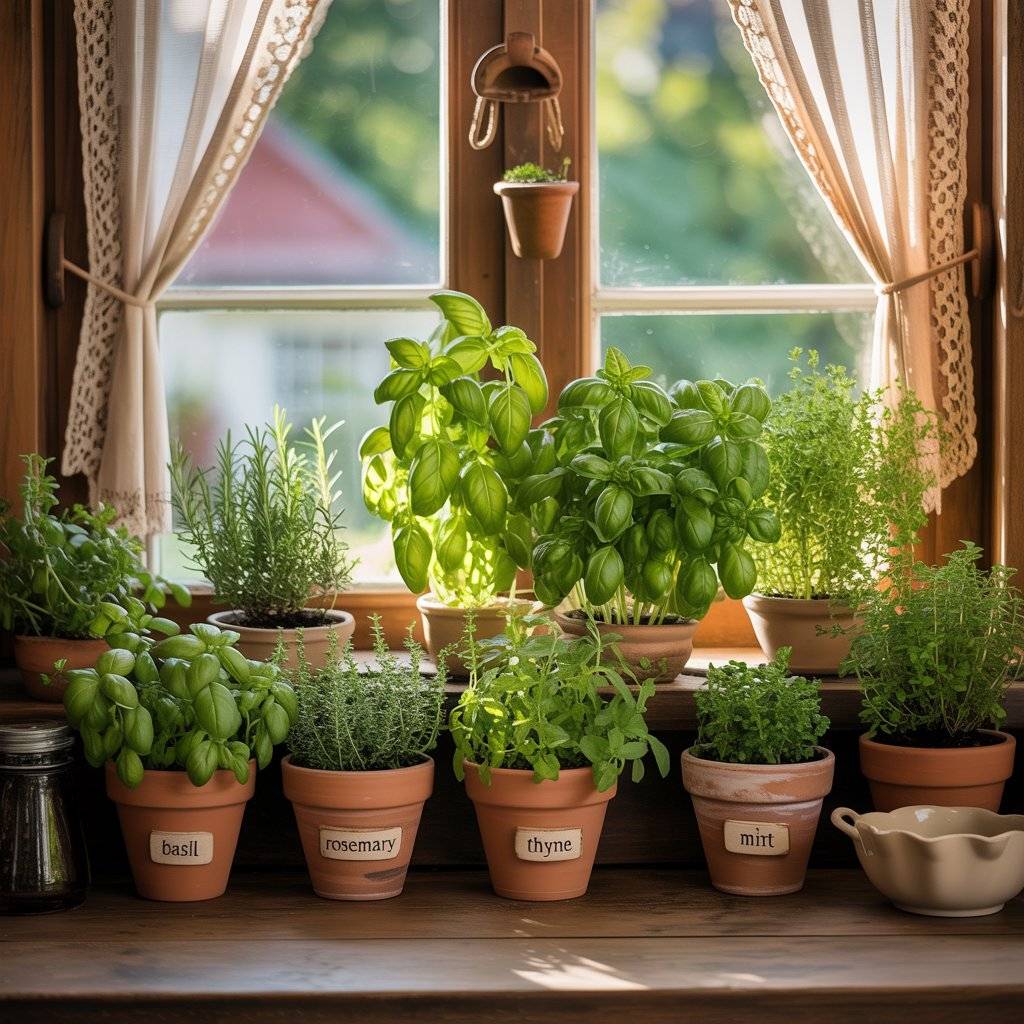
Nothing brings life to a cottagecore kitchen like fresh herbs on the windowsill. Basil, rosemary, thyme, or mint add color, scent, and that slightly messy, lived-in charm. Hanging planters or small pots let you use every corner without cluttering counters.
Plus, you can snip fresh leaves for cooking any time, which feels so satisfying. It’s a simple, sustainable touch that makes the kitchen feel alive.
indoor garden – Suggested Supply: Check price on Amazon.com
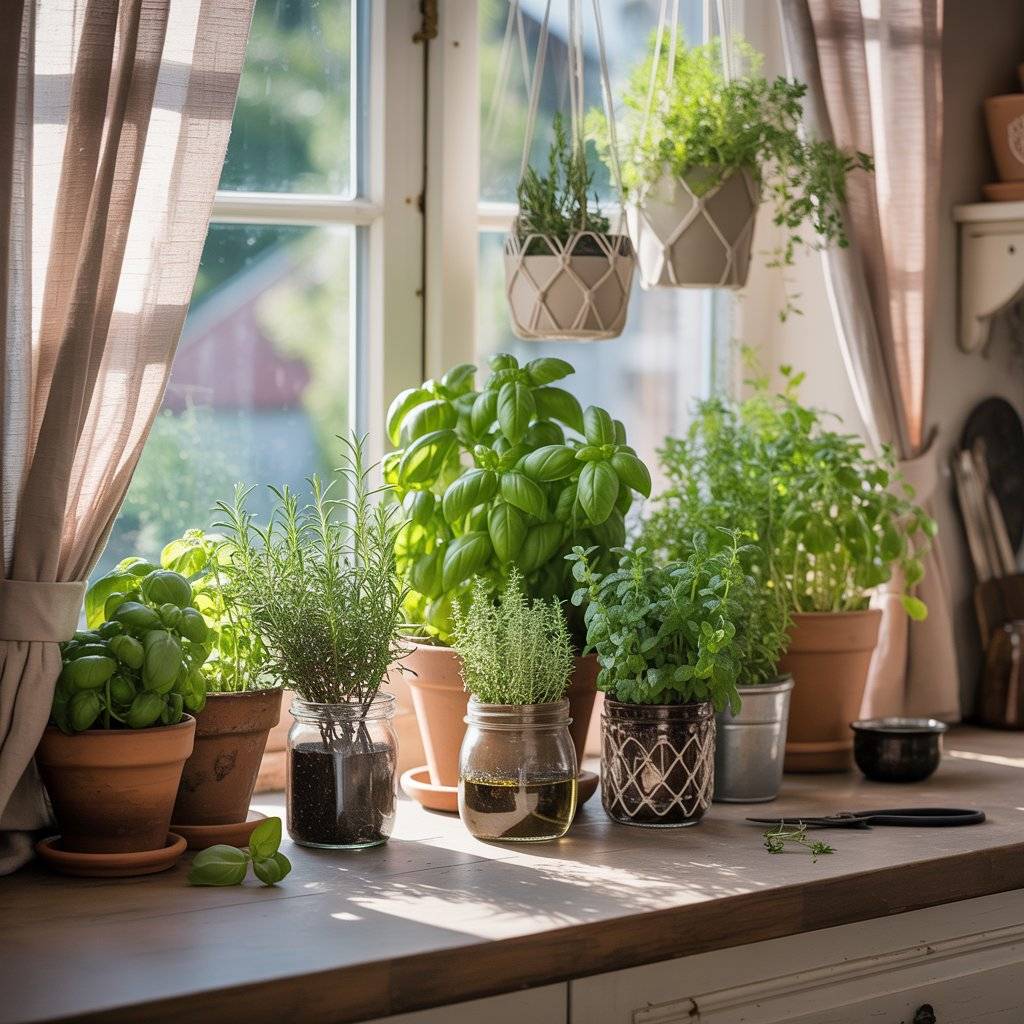
10. Choose Stone Countertops

Stone countertops like marble, soapstone, or granite aren’t just beautiful they’re built to last for decades. Unlike processed surfaces, they age gracefully, gaining character with each scratch or patina over time.
They’re also an eco-friendly choice, since they don’t need frequent replacement. A little care like regular sealing for porous stones keeps them looking natural and timeless. Solid, earthy surfaces like these make your kitchen feel grounded and connected to nature.
Countertops – Suggested Supply: Check price on Amazon.com
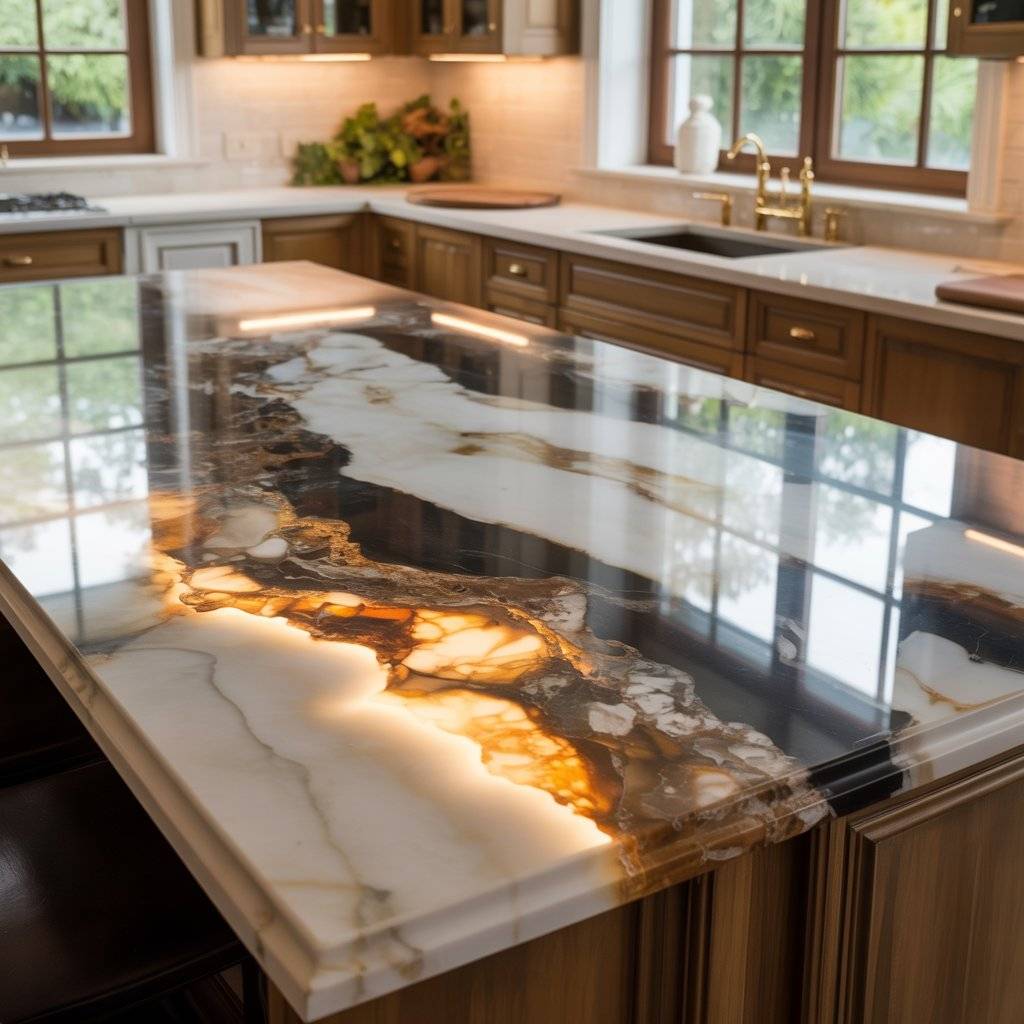
11. Add Handmade Pottery + Ceramic Pieces
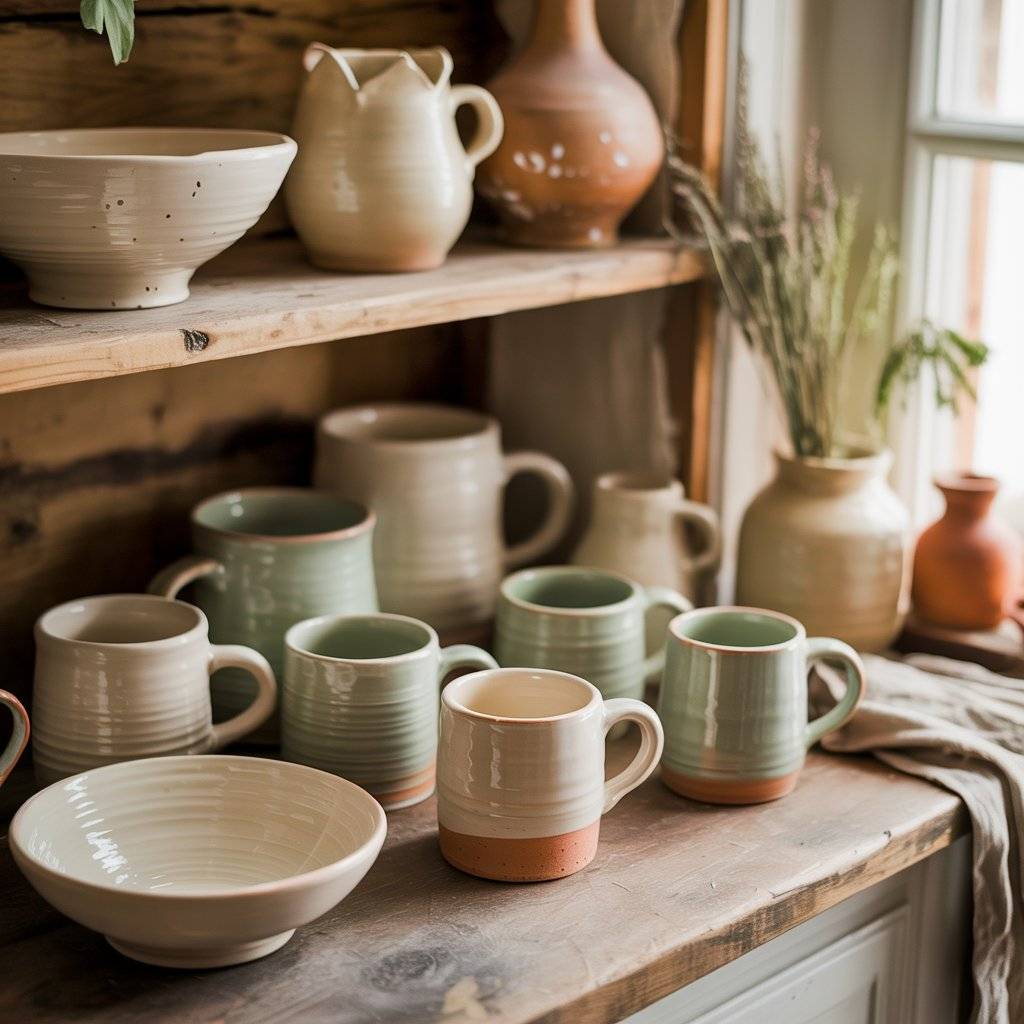
Handmade pottery instantly adds personality to a cottagecore kitchen. Each cup, bowl, or vase has its own tiny imperfections little dips, uneven edges, or soft glazes that make it feel warm and real. Supporting artisans means your kitchen has stories, not just stuff.
Group a few pieces on open shelves or the countertop to add texture and charm. It’s an easy way to mix function with that lived-in, organic cottagecore vibe.
Handmade Pottery + Ceramic Pieces– Suggested Supply: Check price on Amazon.com
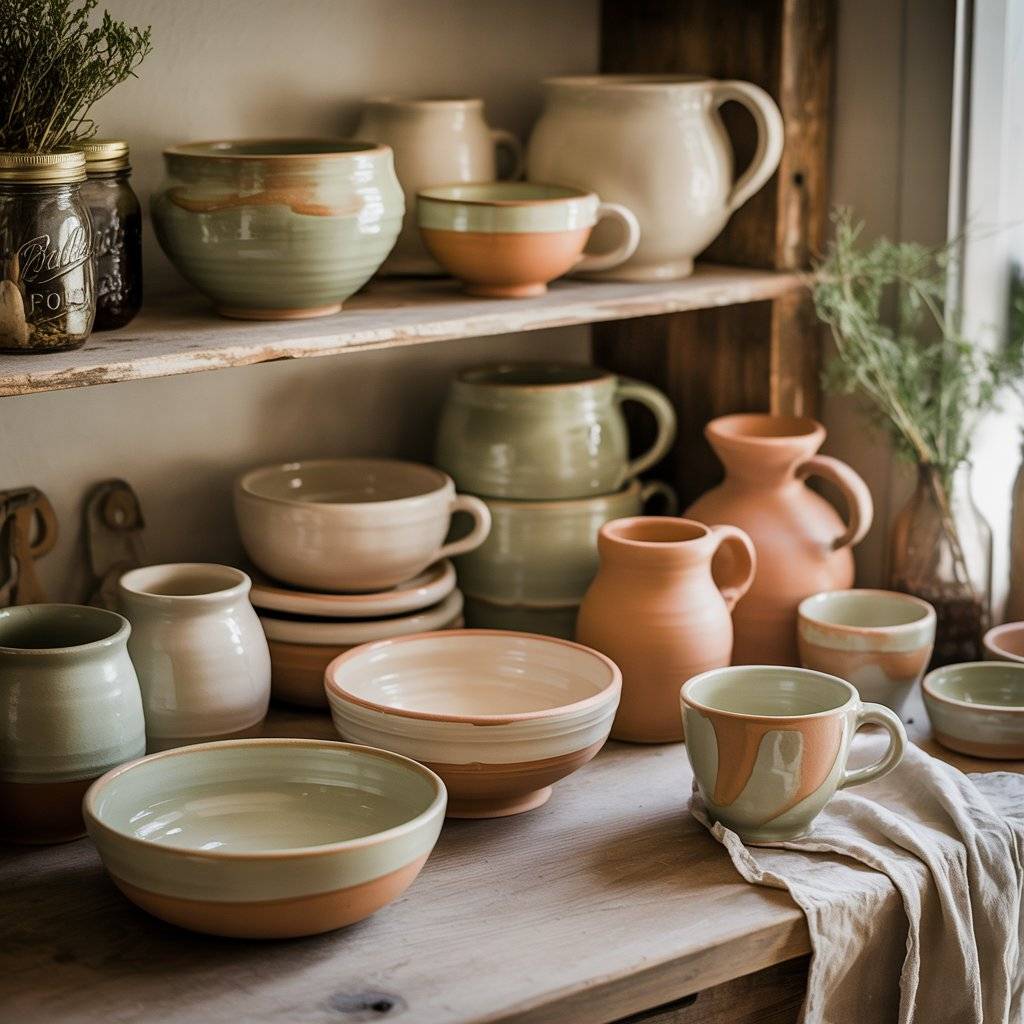
12. Use Non-Toxic Paint and Finishes
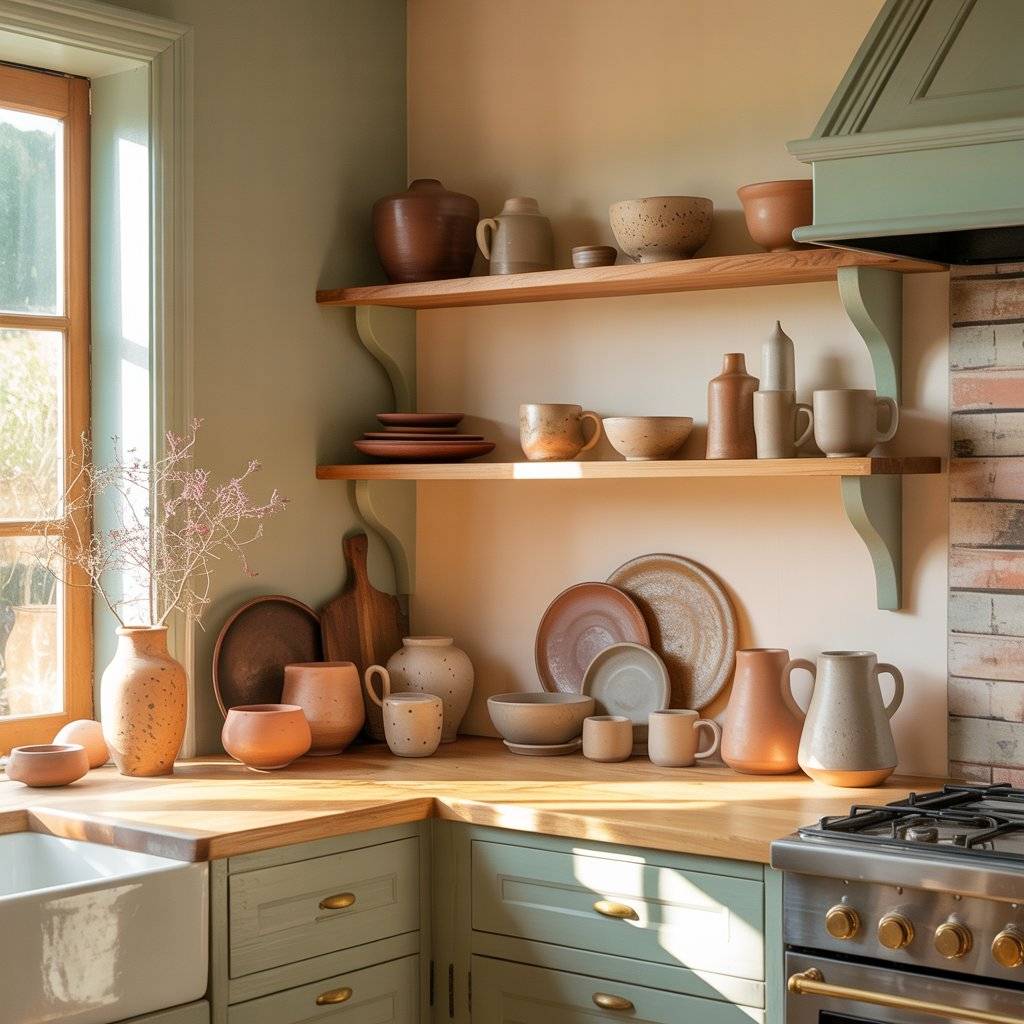
Low-VOC paint is a simple swap that makes a big difference. Soft, earthy tones like sage, cream, or clay bring warmth without overwhelming the space, and you don’t have to worry about harsh fumes.
Natural oils or plant-based finishes on wood keep the kitchen healthy and smell-free while letting the material shine. It’s one of those small changes that feels effortless but really sets the tone for a cozy, eco-friendly space.
Non-Toxic Paint – Suggested Supply: Check price on Amazon.com
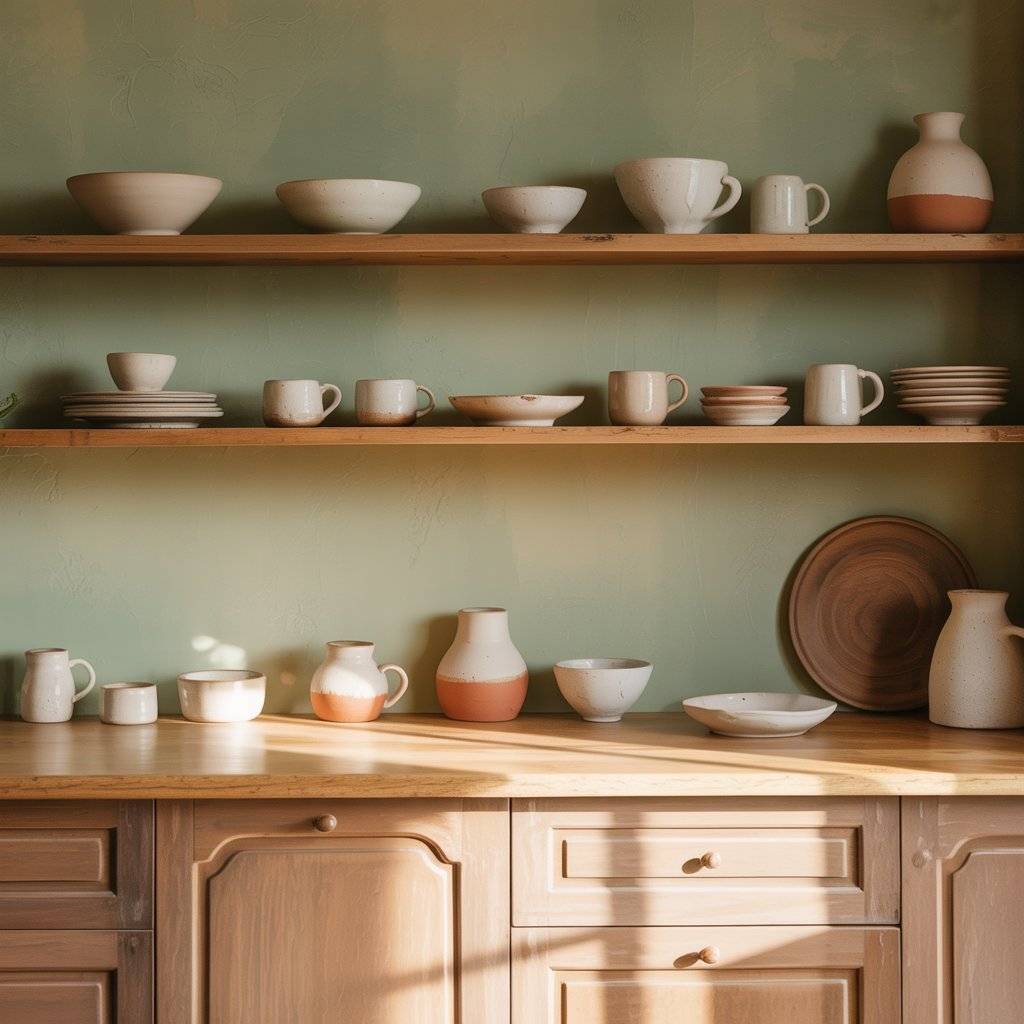
13. Install a Farmhouse Sink

A big, deep farmhouse sink instantly feels cozy and practical. Perfect for washing fresh herbs, produce from your garden, or a collection of handmade pottery, it’s the kind of sink that invites you to linger. The apron front adds that charming cottagecore touch, blending style with real function.
Pair it with a simple brass or matte black faucet, and it becomes the heart of your kitchen. You’ll notice how much easier cleanup feels in a sink made for everyday life.
Farmhouse Sink– Suggested Supply: Check price on Amazon.com
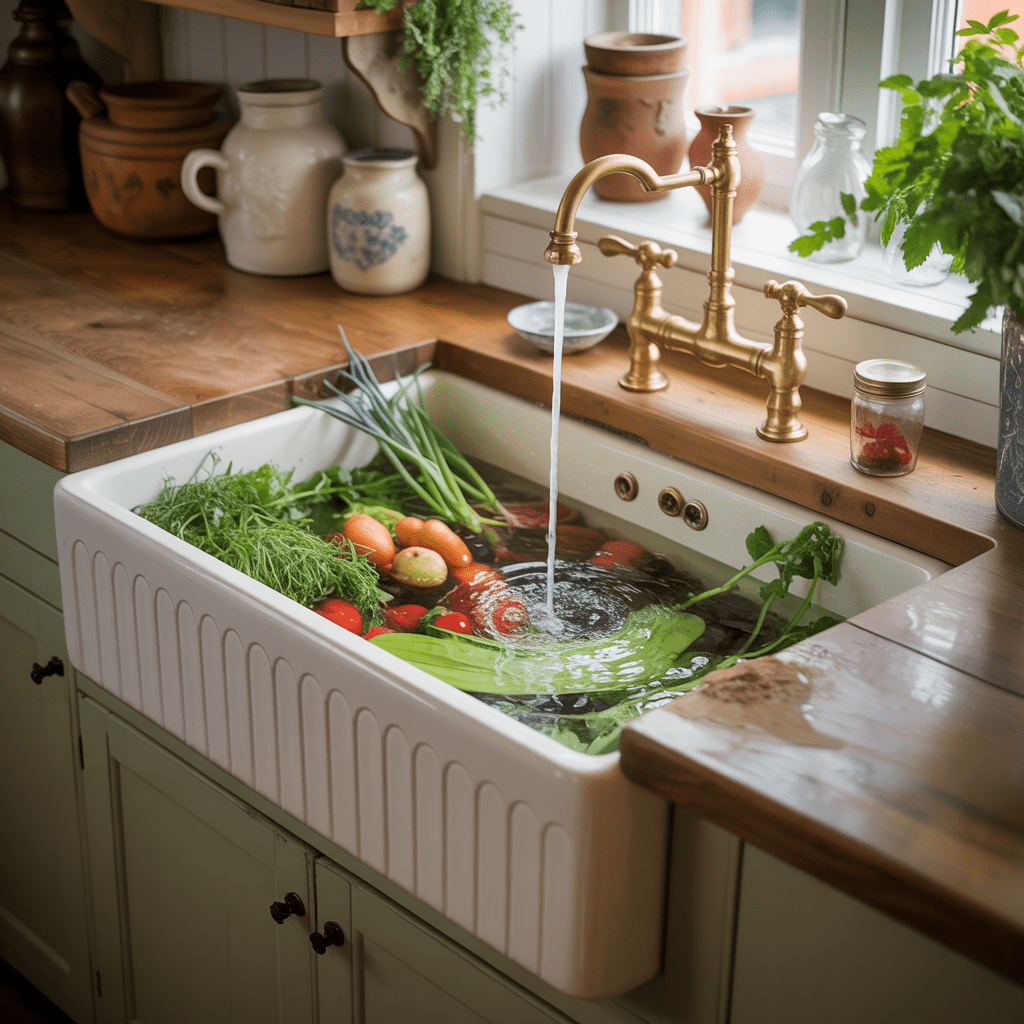
14. Add a Butcher-Block Island

A butcher-block island made from reclaimed wood brings instant warmth and charm to a cottagecore kitchen. The natural grain and worn edges tell a story, making the space feel lived-in and cozy. Beyond looks, it’s incredibly practical perfect for chopping, kneading dough, or even casual meals.
Choosing reclaimed wood also keeps old materials out of the landfill, so your kitchen feels good for the planet too. It’s a piece those ages beautifully, gaining character year after year while staying fully functional.
Butcher-block – island Suggested Supply: Check price on Amazon.com

15. Use Wicker + Rattan Baskets for Storage
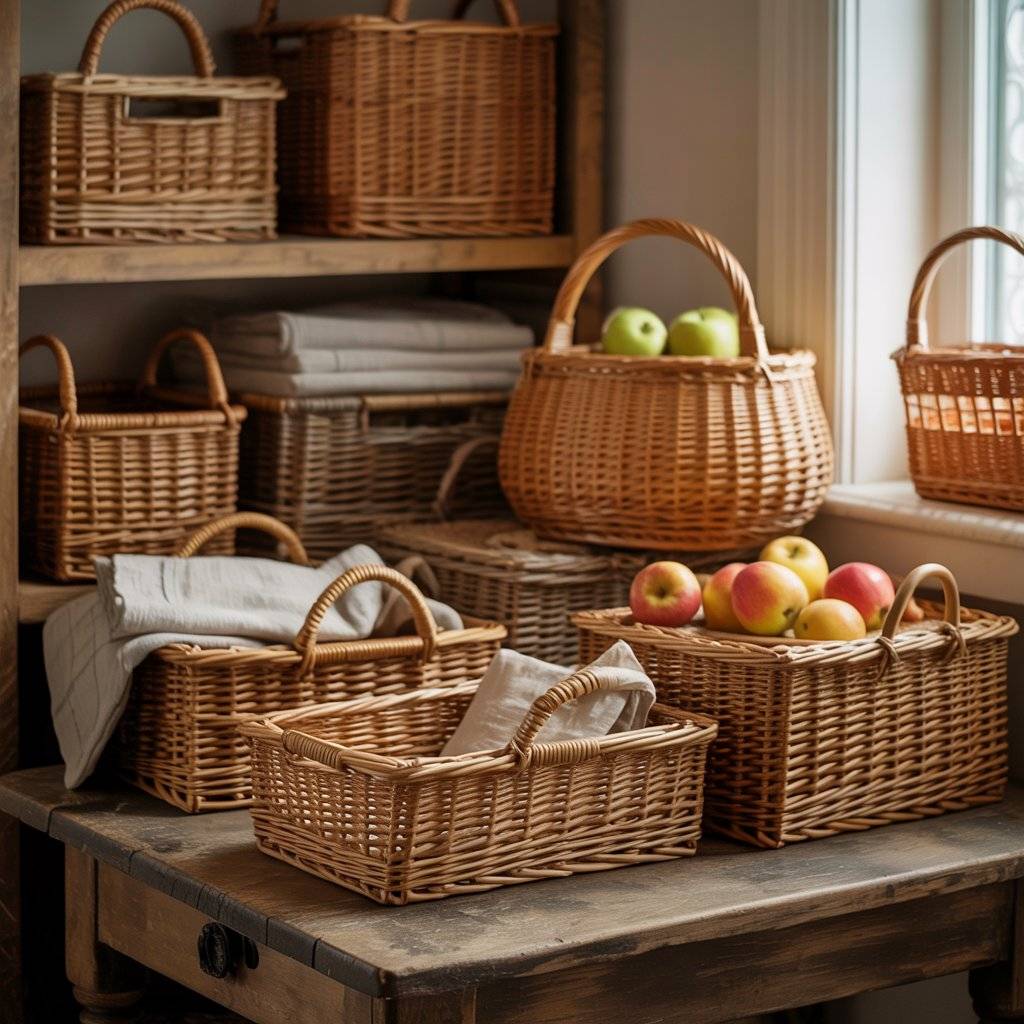
Wicker and rattan baskets are a cottagecore classic, and they’re surprisingly practical too. Use them to corral fruits and veggies, store linens, or hide little bits of clutter that otherwise make a space feel messy.
They add texture and warmth without feeling fussy, and they’re usually made from renewable materials, so they’re kind to the planet. Stack a few, mix sizes, or place one on a shelf for instant charm. Simple, functional, and cozy all at once.
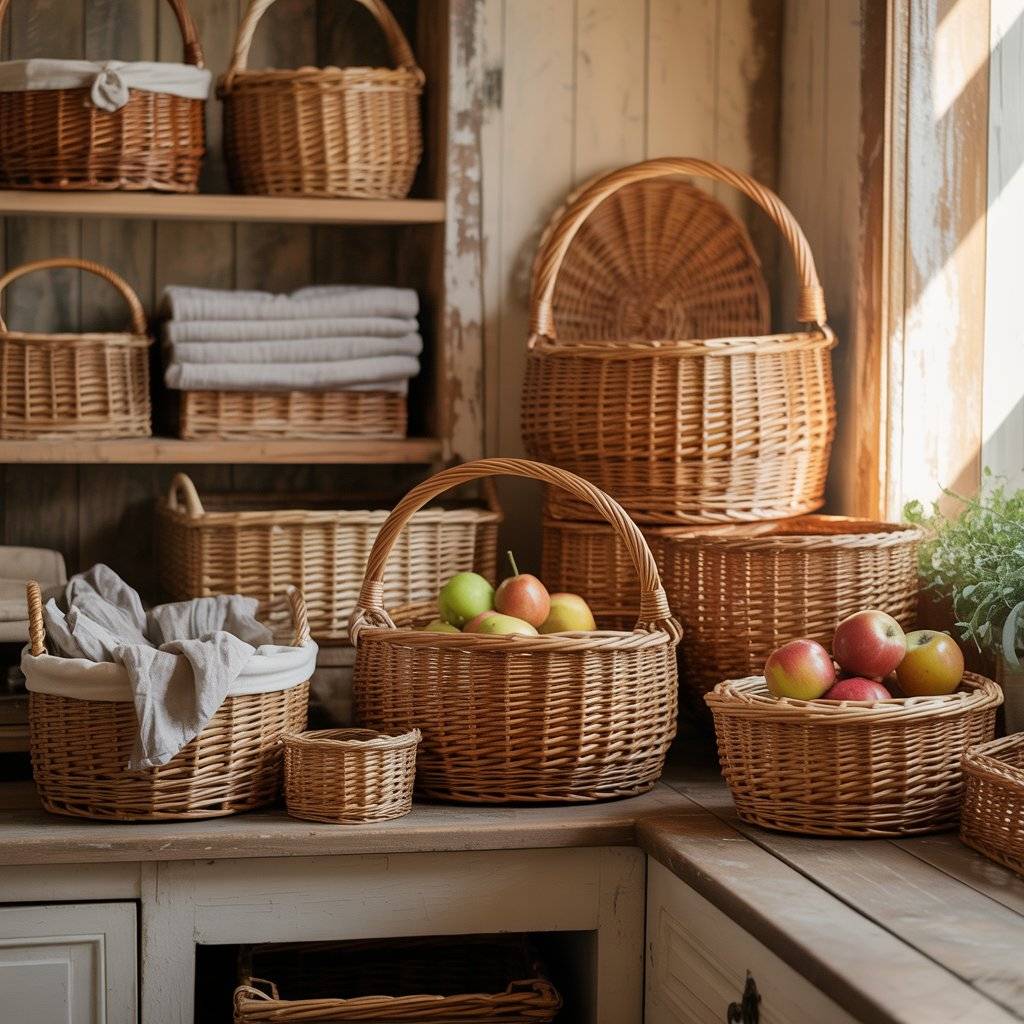
16. Mix Vintage Hardware With Modern Efficiency
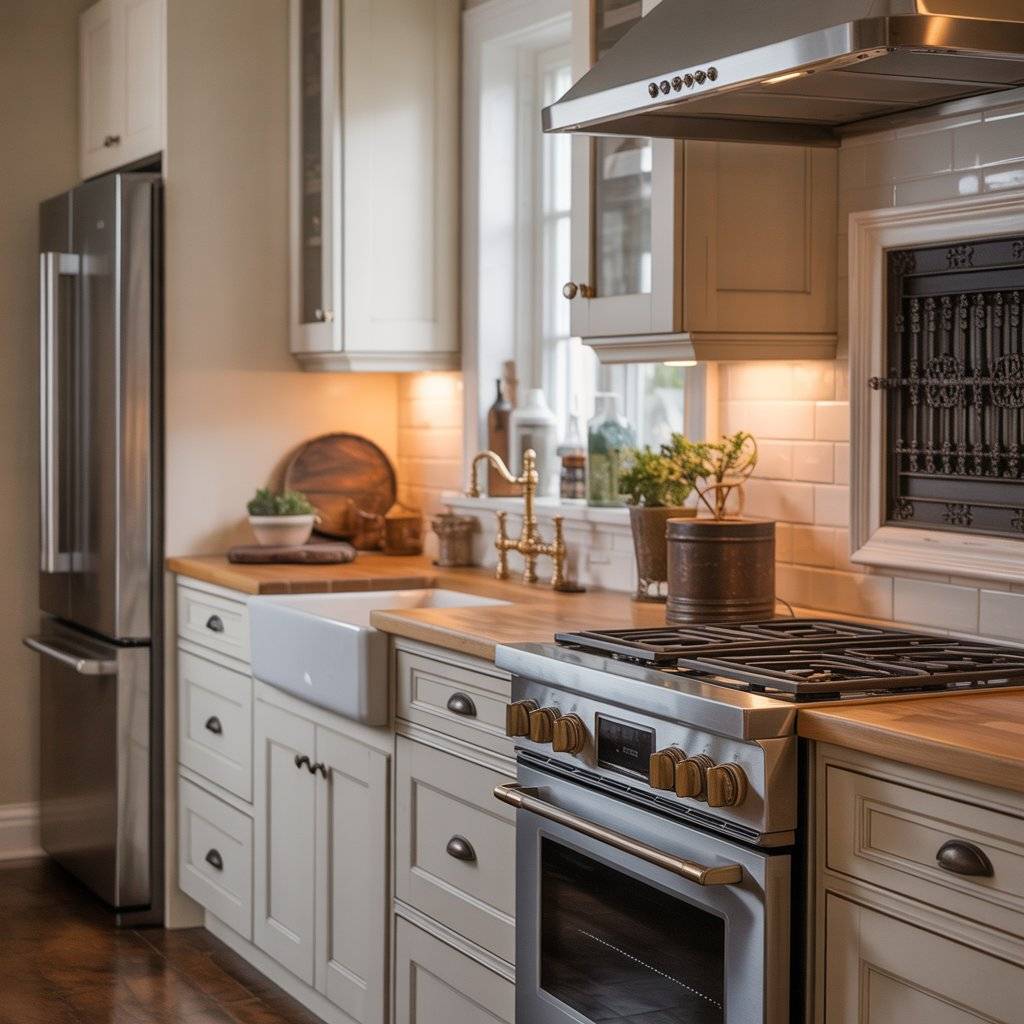
Pairing vintage hardware with new appliances is an easy way to make your kitchen feet timeless. Aged brass knobs, iron pulls, or worn handles add personality and that charming old-world touch. Meanwhile, energy-efficient stoves, fridges, and dishwashers keep things practical and low-impact.
The contrast between old and new gives the space character without feeling cluttered. It’s a simple trick to get style and sustainability working together.
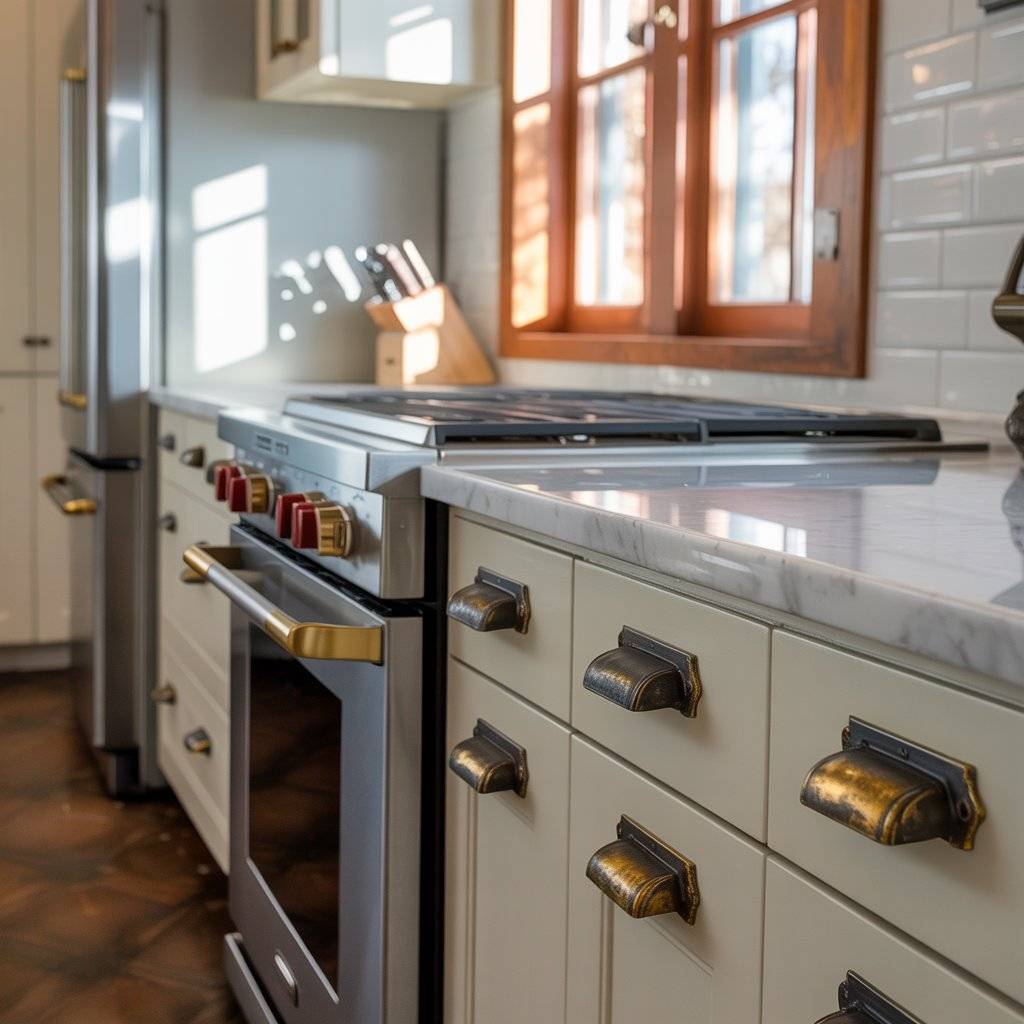
17. Add Soft, Warm Lighting
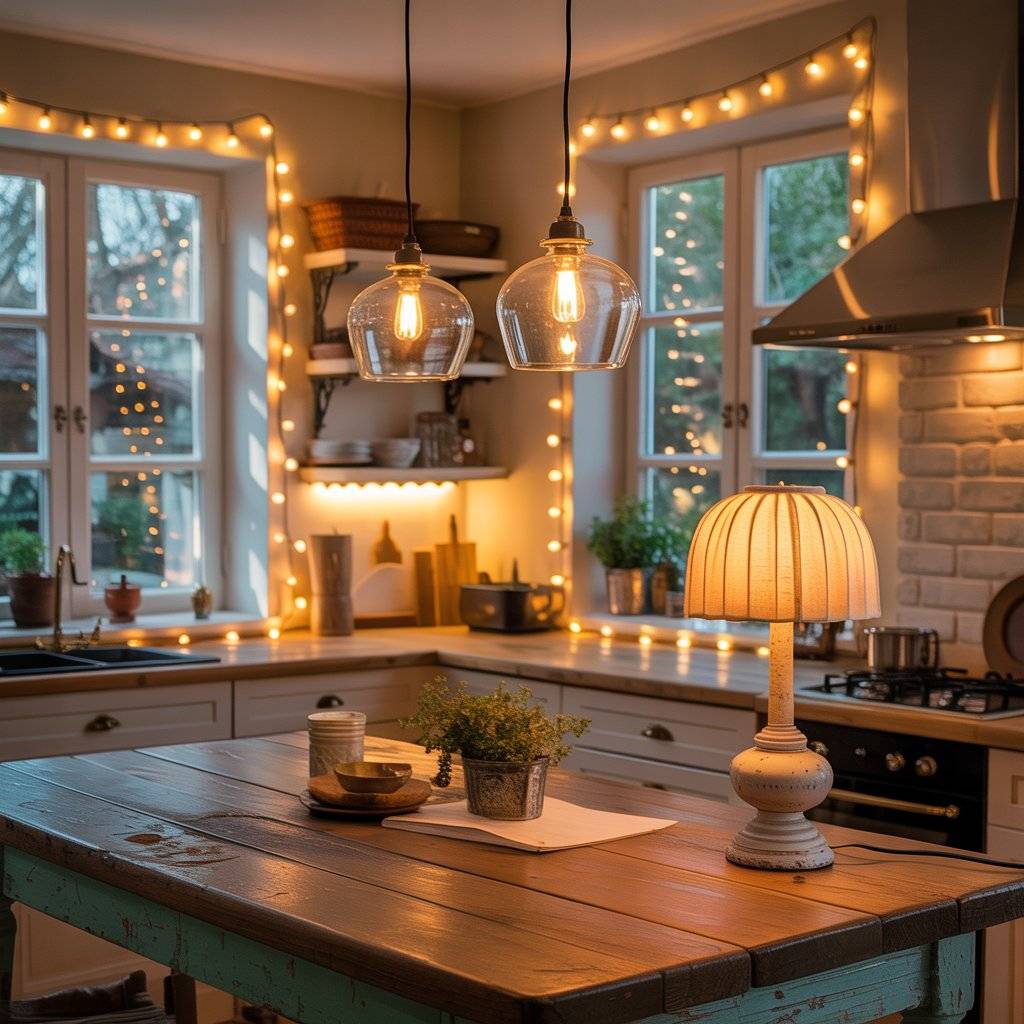
Lighting can make or break the cozy vibe in a cottagecore kitchen. Choose warm LED bulbs that save energy but still feel gentle on the eyes. Vintage glass pendants, little fabric-shaded lamps, or even a string of fairy lights add layers of softness.
Scatter light at different heights over counters, above the table, and in corners to create a warm, inviting glow. It’s simple, practical, and instantly makes the kitchen feel lived-in and magical.
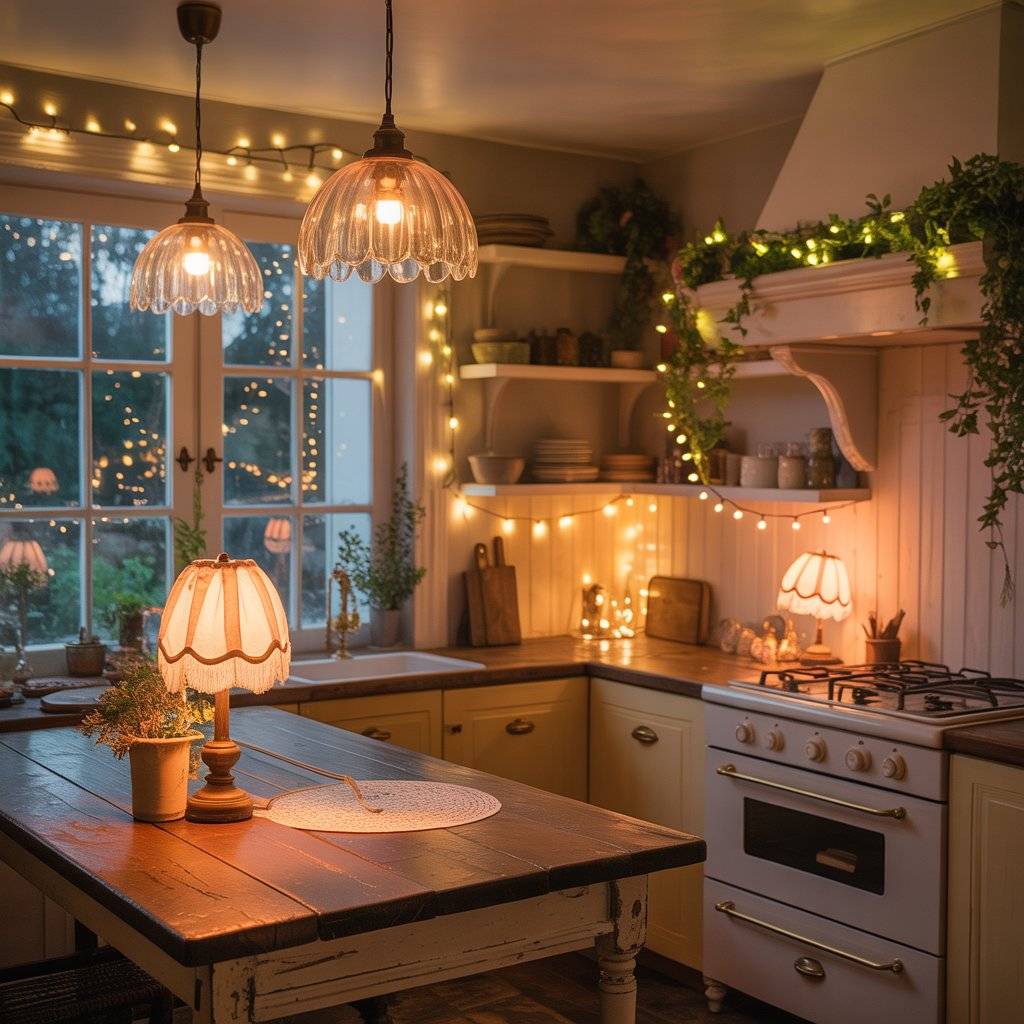
18. Incorporate Stone or Brick Floors

Stone or brick floors are perfect for a cottagecore kitchen they feel solid underfoot and instantly add rustic charm. They last forever, which makes them a truly eco-friendly choice, and each natural imperfection tells a little story.
To keep the space cozy and soft, layer in woven rugs or runners in warm tones. Not only do they protect the floor, but they also add texture and that lived-in, welcoming feel. Over time, the floor develops a patina that only adds to its character.
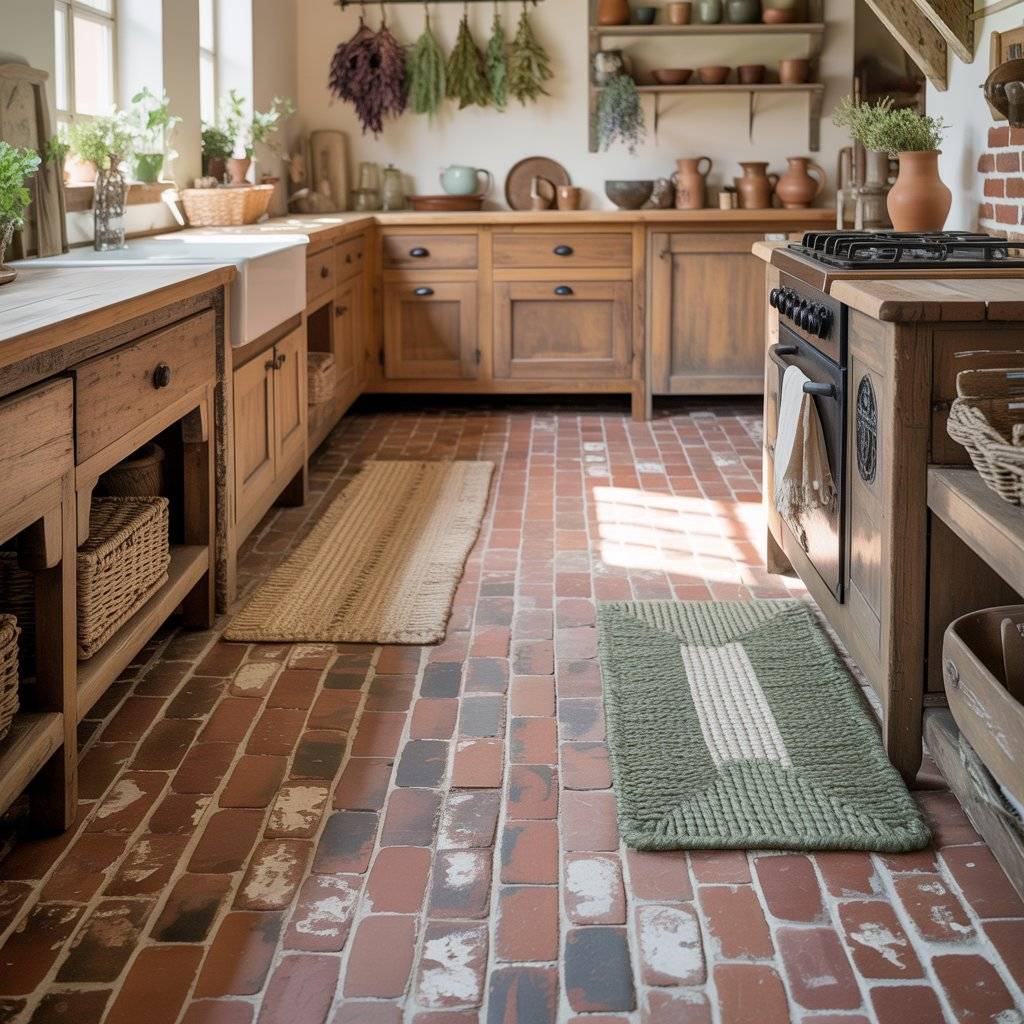
19. Add a Charming Tea or Coffee Corner
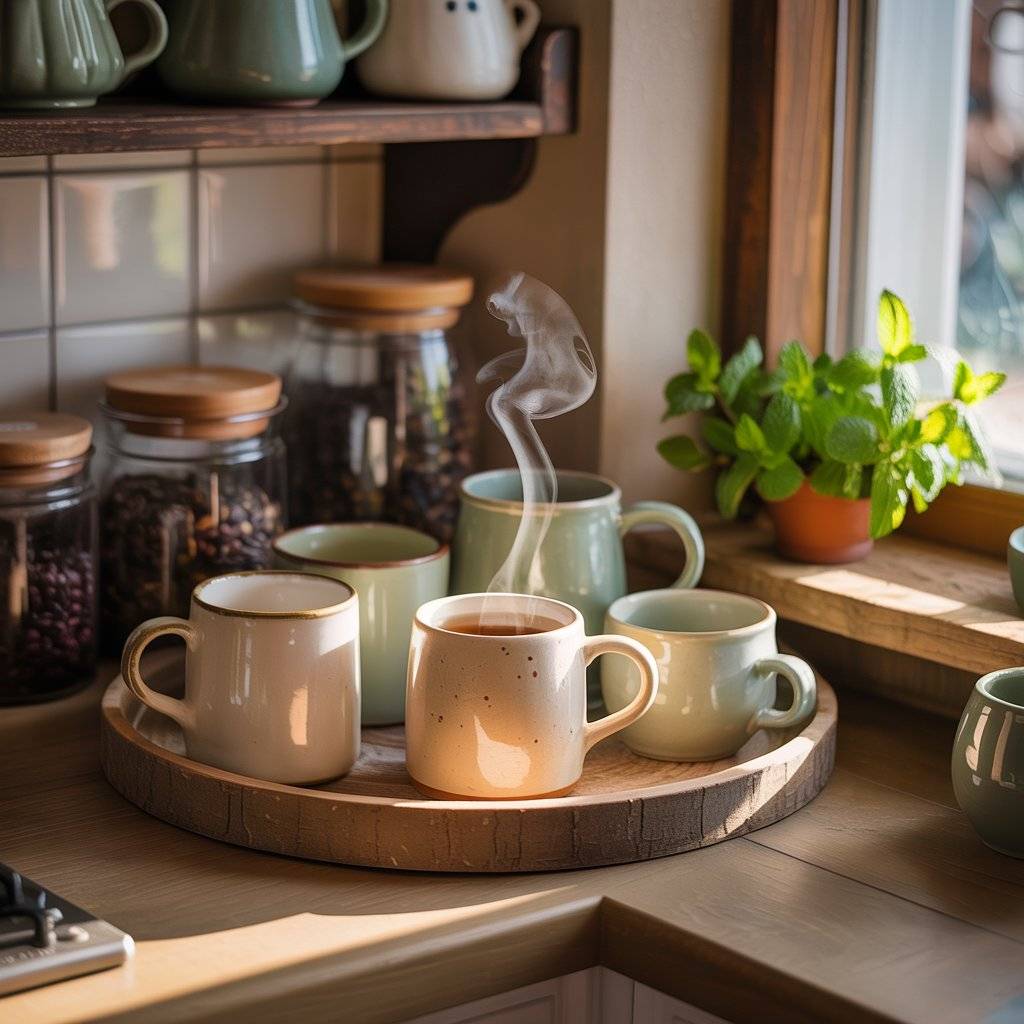
Set aside a little nook for tea or coffee it’s a tiny ritual that makes mornings feel special. Use vintage mugs, mismatched handmade ceramics, and simple wooden trays to keep the space cozy and personal.
Add a small potted herb, like mint or thyme, for a fresh touch. A few jars of loose-leaf tea or coffee beans make it practical, but still charming. It’s the kind of spot where you pause, sip slowly, and enjoy the warmth of your kitchen.
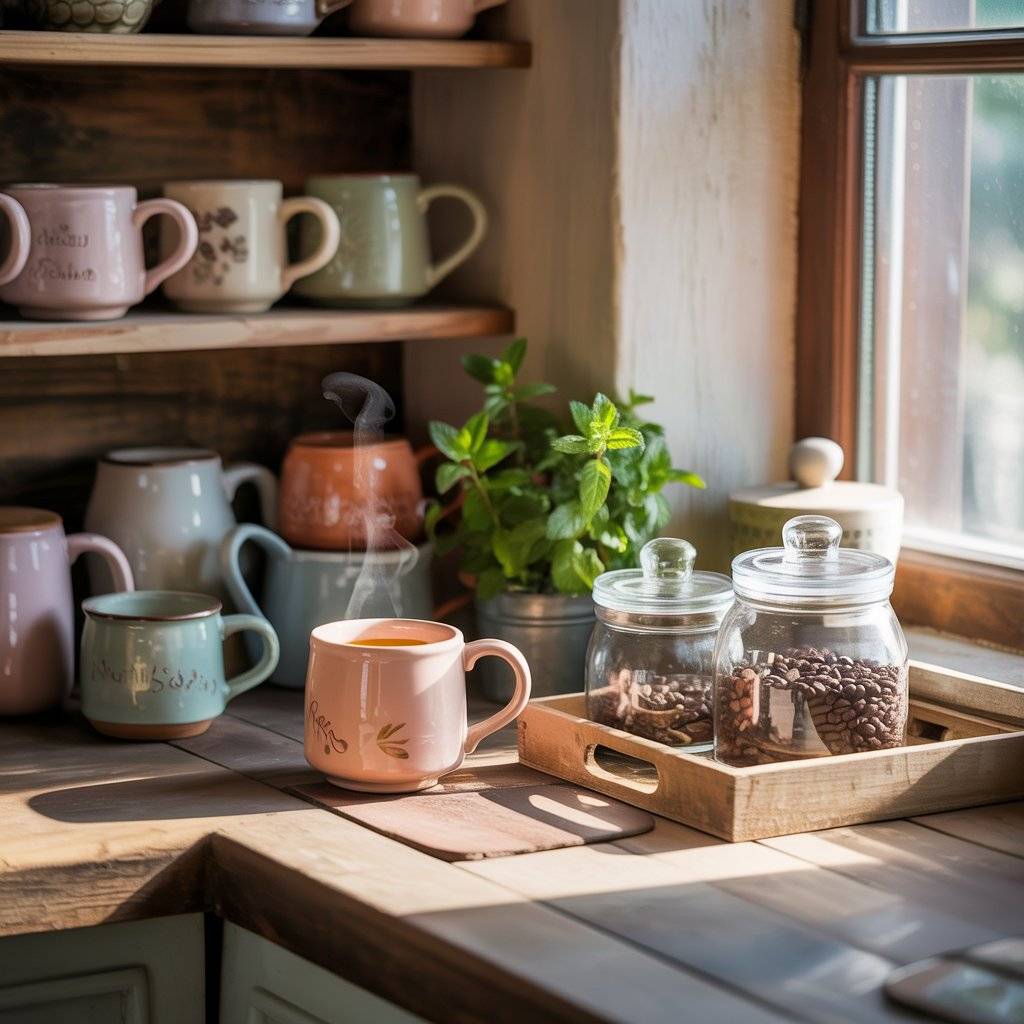
20. Use Open Pantries Instead of Built-In Cabinets
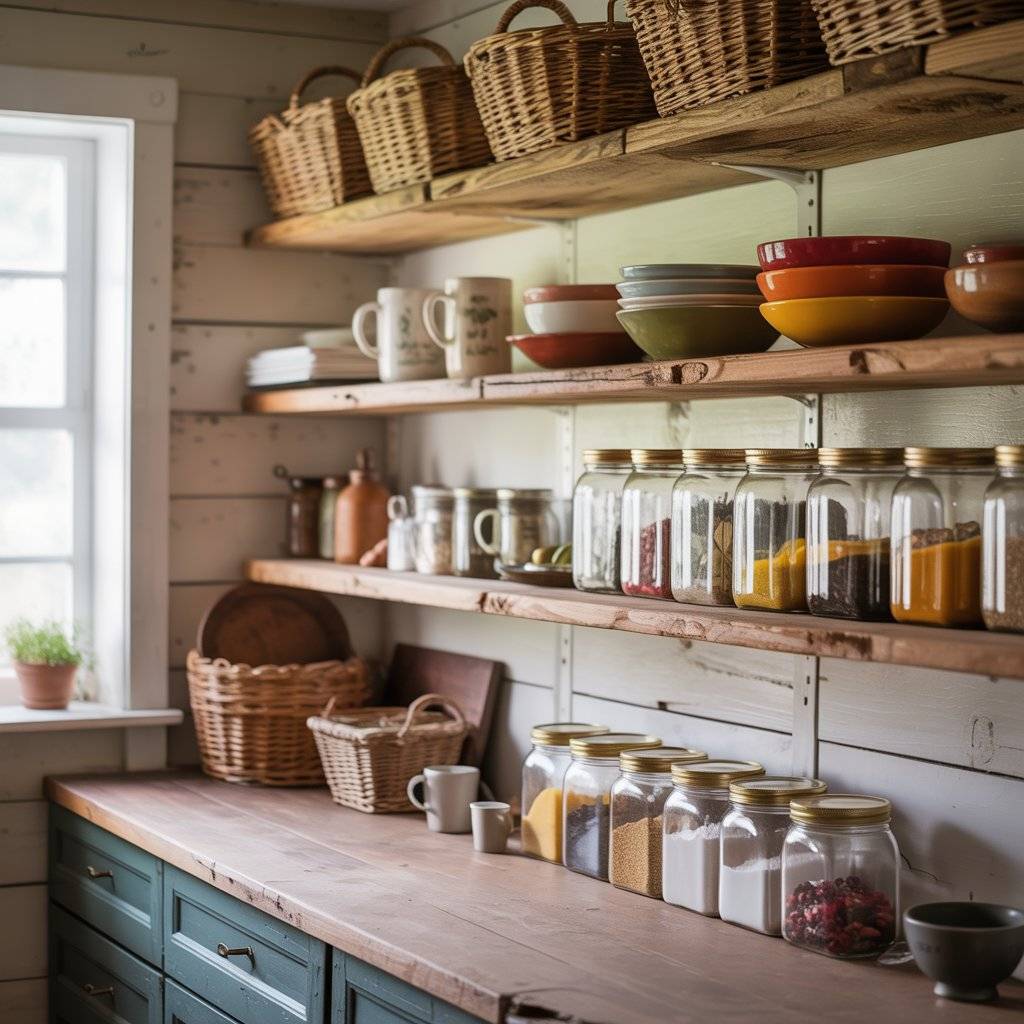
Open wooden shelves, glass jars, and woven baskets give your kitchen a relaxed farmhouse feel. Everything is easy to see and grab, which makes cooking feel simpler and more connected.
You use less material than full cabinets, and the space feels lighter and more open. Plus, it’s perfect for displaying your favorite mugs, herbs, or pantry staples. Little imperfections in the wood or jars just add to the cozy, lived-in vibe.

21. Display Cast Iron + Wooden Tools

Cast iron skillets, wooden spoons, and rolling pins aren’t just for cooking they’re part of the cottagecore charm. Hang them on hooks or lean them against the backsplash so they’re always in reach and add visual warmth.
The worn edges and natural patina tell a story, making your kitchen feel lived-in and cozy. Durable, practical, and beautiful, these everyday tools become subtle decor that blends function with character.
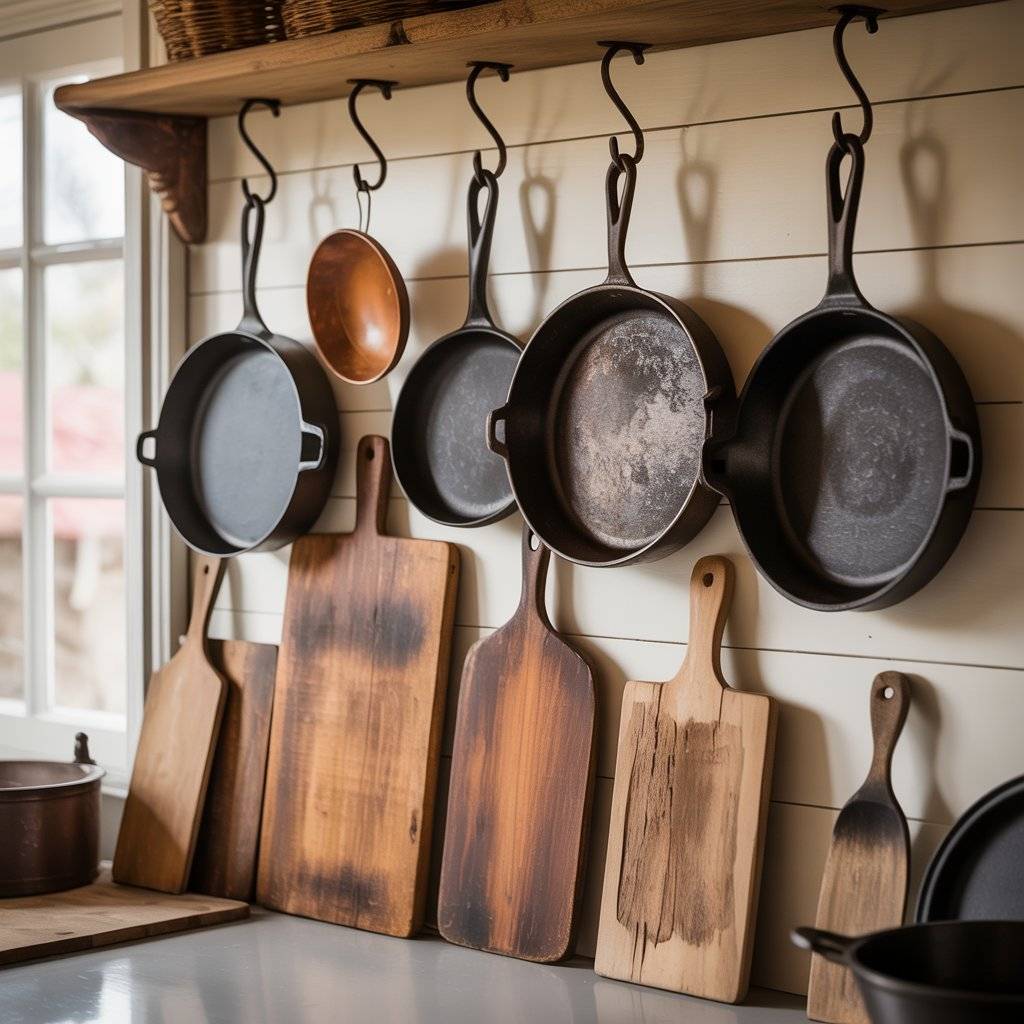
22. Choose Eco-Friendly Cleaning Supplies
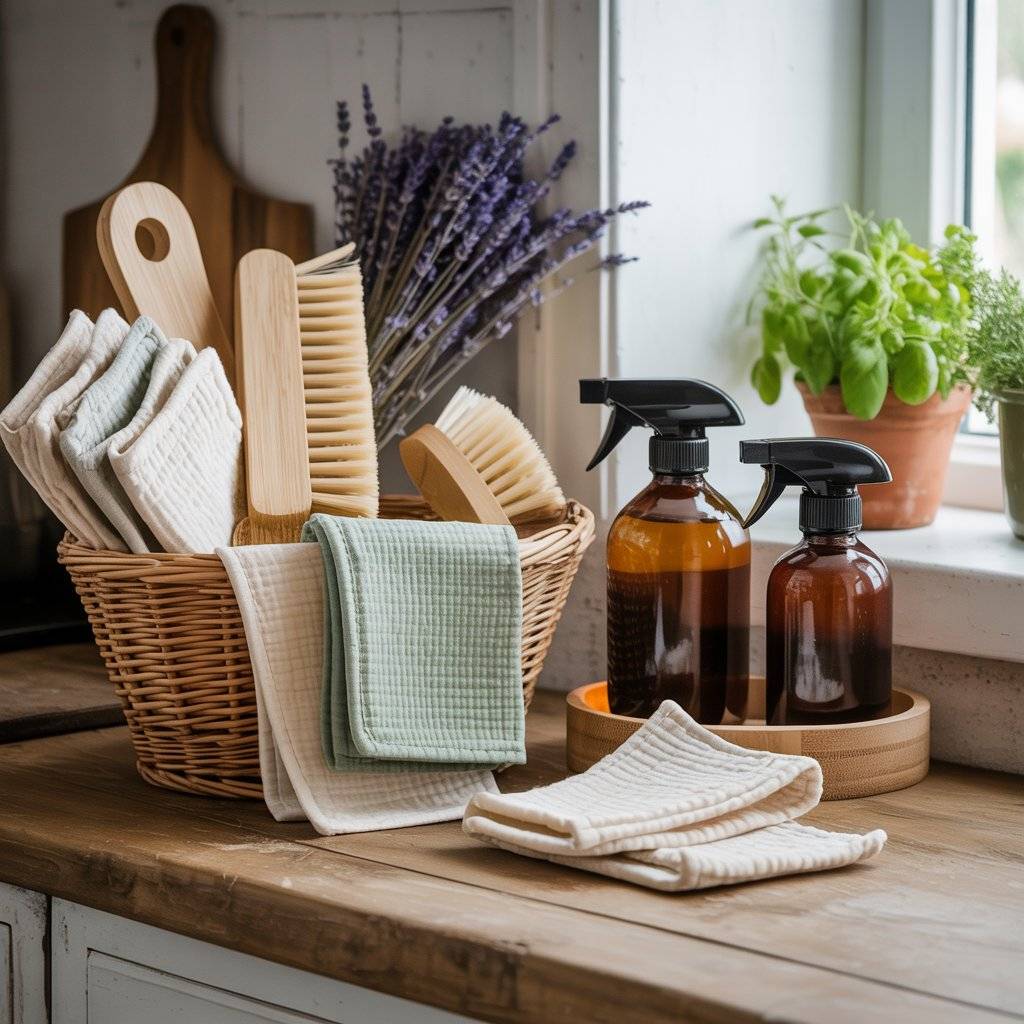
Swap harsh chemicals for natural soaps, wooden brushes, and reusable cloths they feel better in your hands and smell fresher, too. These simple swaps reduce waste and keep your kitchen feeling wholesome and lived-in.
Cotton cloths and bamboo scrubbers last for years, and you can compost or recycle what’s left. It’s a small change that makes a big difference for your home and the planet. Plus, using natural materials just fits the cozy, cottagecore vibe perfectly.
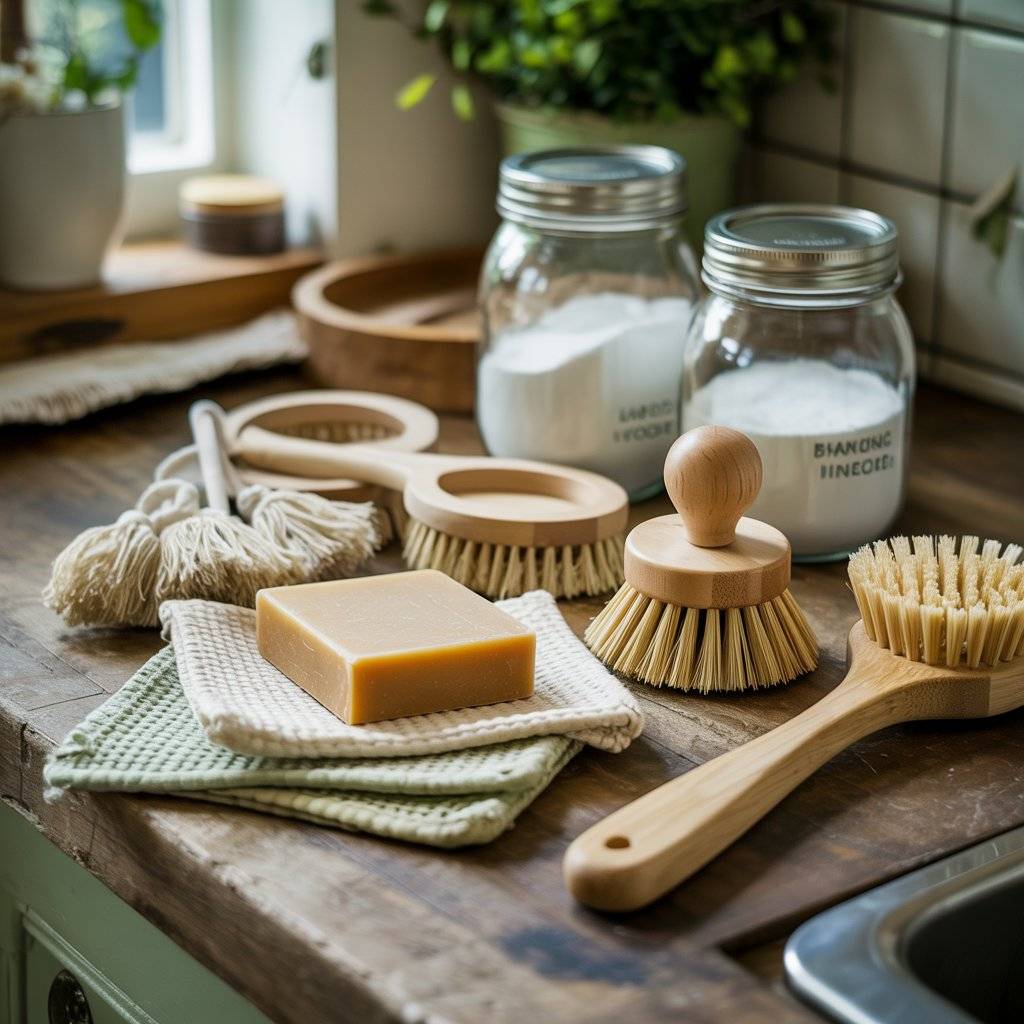
23. Add Wildflower Bouquets or Dried Arrangements
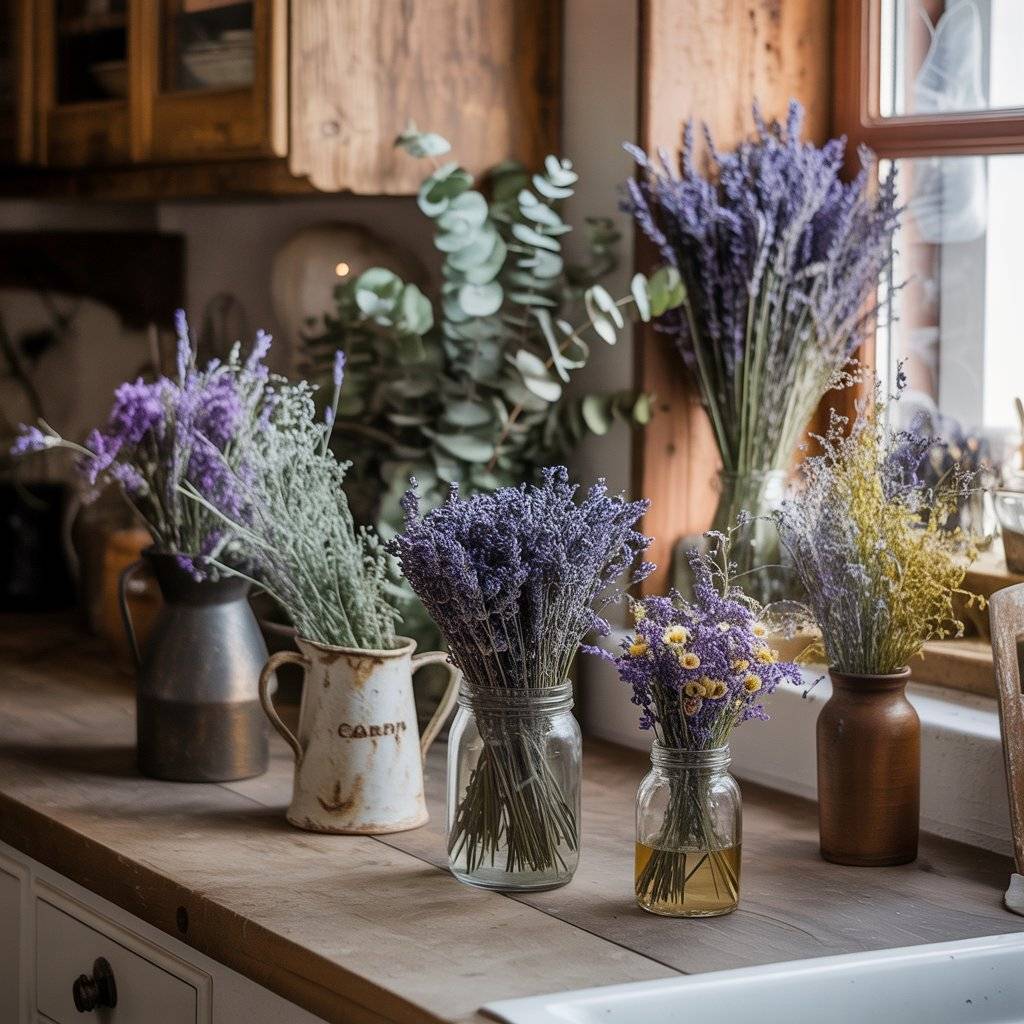
A few bunches of dried lavender, eucalyptus, or seasonal wildflowers can completely change the feel of your kitchen. They bring a soft, natural scent and a little touch of the outdoors, even in the middle of winter.
Place them in vintage jars, wooden vases, or ceramic pitchers for that charming cottagecore vibe. These arrangements last for months, so you get beauty without constant upkeep. It’s an effortless way to add life, texture, and a bit of whimsy to the space.
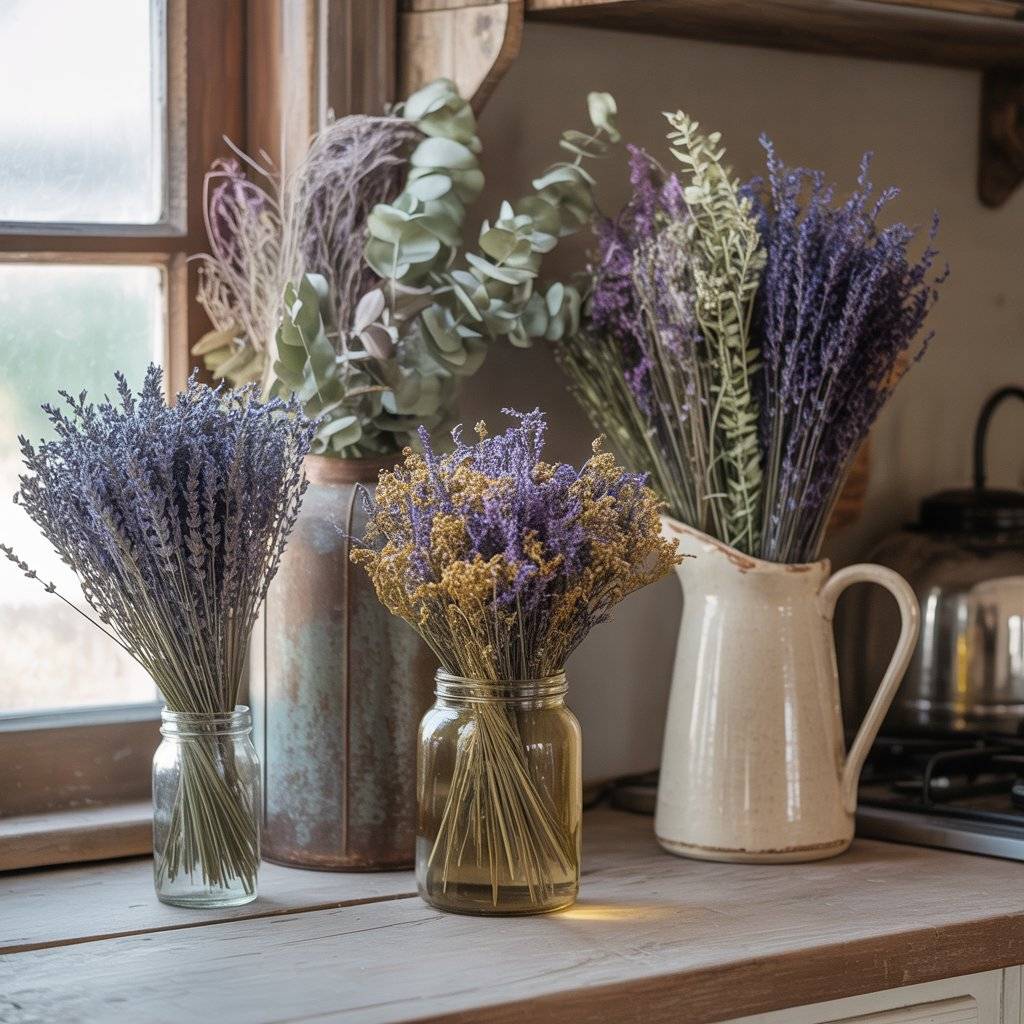
24. Embrace Imperfections
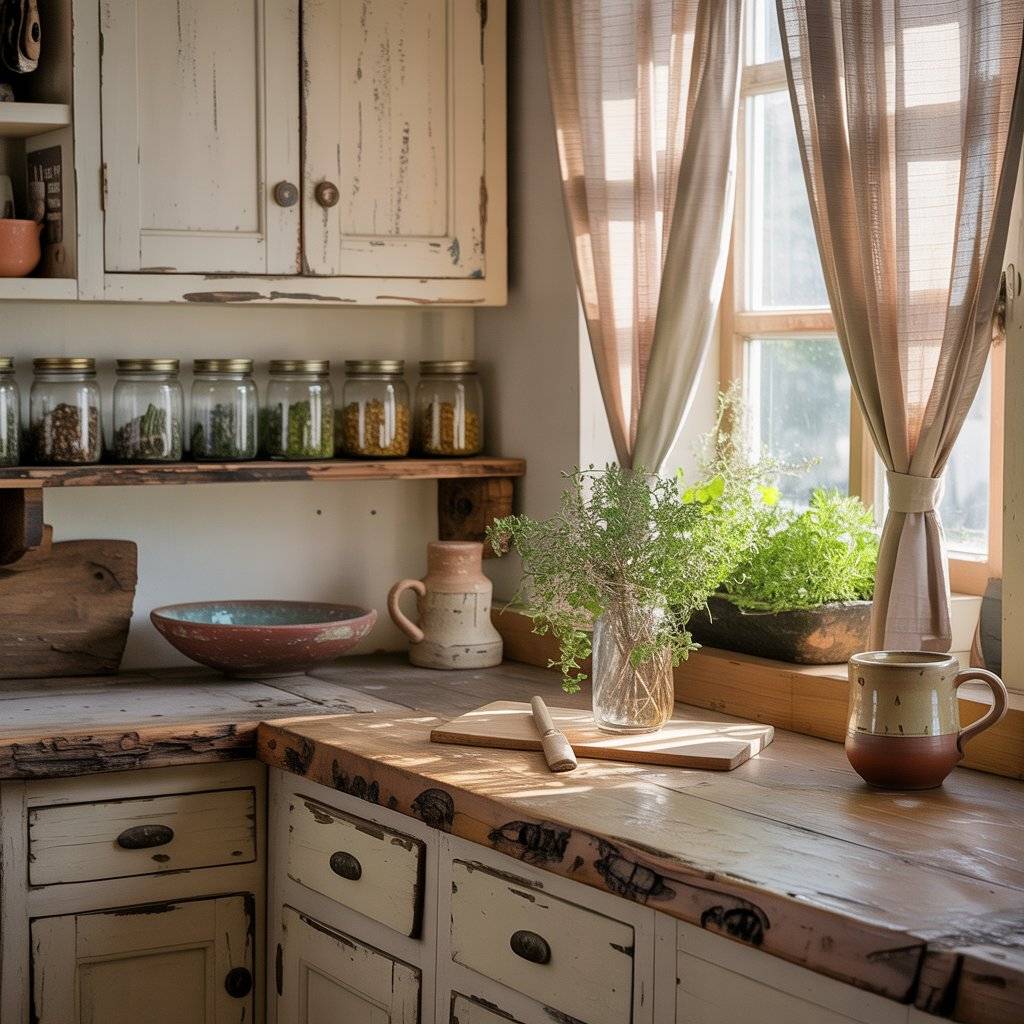
Cottagecore is all about celebrating the handmade and the slightly imperfect. Uneven textures, rustic finishes, and repurposed wood give your kitchen personality and warmth that perfectly contrasts with mass-produced pieces.
Don’t worry if a cabinet is a little crooked or a countertop has knots and scratches those small flaws tell a story. They make the space feel lived-in, authentic, and cozy, while keeping your design eco-friendly by avoiding overly processed materials. Embracing imperfections is what gives the kitchen its charm.

Simple Styling Tips for an Eco-Friendly Cottagecore Kitchen
- Stick to natural textures: wood, ceramic, linen, stone.
- Mix warm metals like brass with reclaimed materials.
- Use plants to add freshness and scent.
- Keep counters minimal but cozy with useful items.
- Choose soft lighting over bright white LEDs.
- Add woven trays, baskets, and pottery.
- Embrace mismatched, handmade, and vintage pieces.
Conclusion
An eco-friendly cottagecore kitchen blends charm, coziness, and sustainability into one beautiful space. With natural materials, thoughtful design choices, and gentle textures, your kitchen becomes a place that supports slow living and daily comfort. Whether you’re adding small upgrades or planning a full transformation, these ideas help you create a comfort, wholesome, and environmentally conscious kitchen you’ll love for years.
Related Post:
- Eco-Friendly Cottagecore Kitchen: A Cozy, Sustainable, Nature-Inspired - November 23, 2025
- 48 Stunning Large Patio Ideas for a Beautiful, Functional Outdoor Space - November 22, 2025
- 20 Backyard Christmas Modern Luxury Dog & Cat Wash Station Ideas - November 20, 2025

